Most cities in Europe are proud of their history. They make efforts to preserve the old buildings that showcase how long the city has stood where it is.
It’s part of the reason why traveling to Europe is so great. Cobble-stoned streets. Car-free centers. People riding bikes, old architecture, cafes, squares.
It’s like stepping back in time fifty, one hundred, two hundred or even five hundred years.
Russians are no exception. They too love Europe. Ask any Russian and they’ll have a go-to favorite European country.
Some like Germany, the Berlin clubs, the Bavarian beer. Others are fans of Italy, the pasta, the seafood, the beaches.
Then there are the Russians who love France and Paris, or those that can’t enough of London. Others opt south and go with Spain.
Millions of Russians travel to Europe each year to spend their hard-earned rubles and enjoy staying in cities with beautiful, historic architecture.
Unfortunately, this love for old architecture among Russians ends as soon as they return back home.
It’s truly a strange phenomenon.
As a foreigner who has lived in Moscow for several years, I struggle to understand it.
Travelling to Europe to enjoy old architecture, then coming back home and not caring at all when that same kind of architecture is destroyed in your country.
I probably wouldn’t care that much either, if I didn’t see the consequences of what such a mentality has to the city.
Because month by month, year by year, all of the historic architecture in Moscow is disappearing.
Beautiful, old buildings that any foreign tourist would love are being systematically torn down and skyscrapers, shopping malls, business complexes are being built in their place.
You would think that a people that so loves to travel to Europe and see all the historic buildings would come back to Russia and try to defend the last bit of old architecture that is left in the city.
But sadly, that’s not the case. Most people don’t care. Others actively support tearing down old buildings.
Let’s take a look at the latest victim of this passive, “who cares” mentality: A set of buildings located near the Krasnoselskaya metro in Moscow on Rusakovskaya Street.
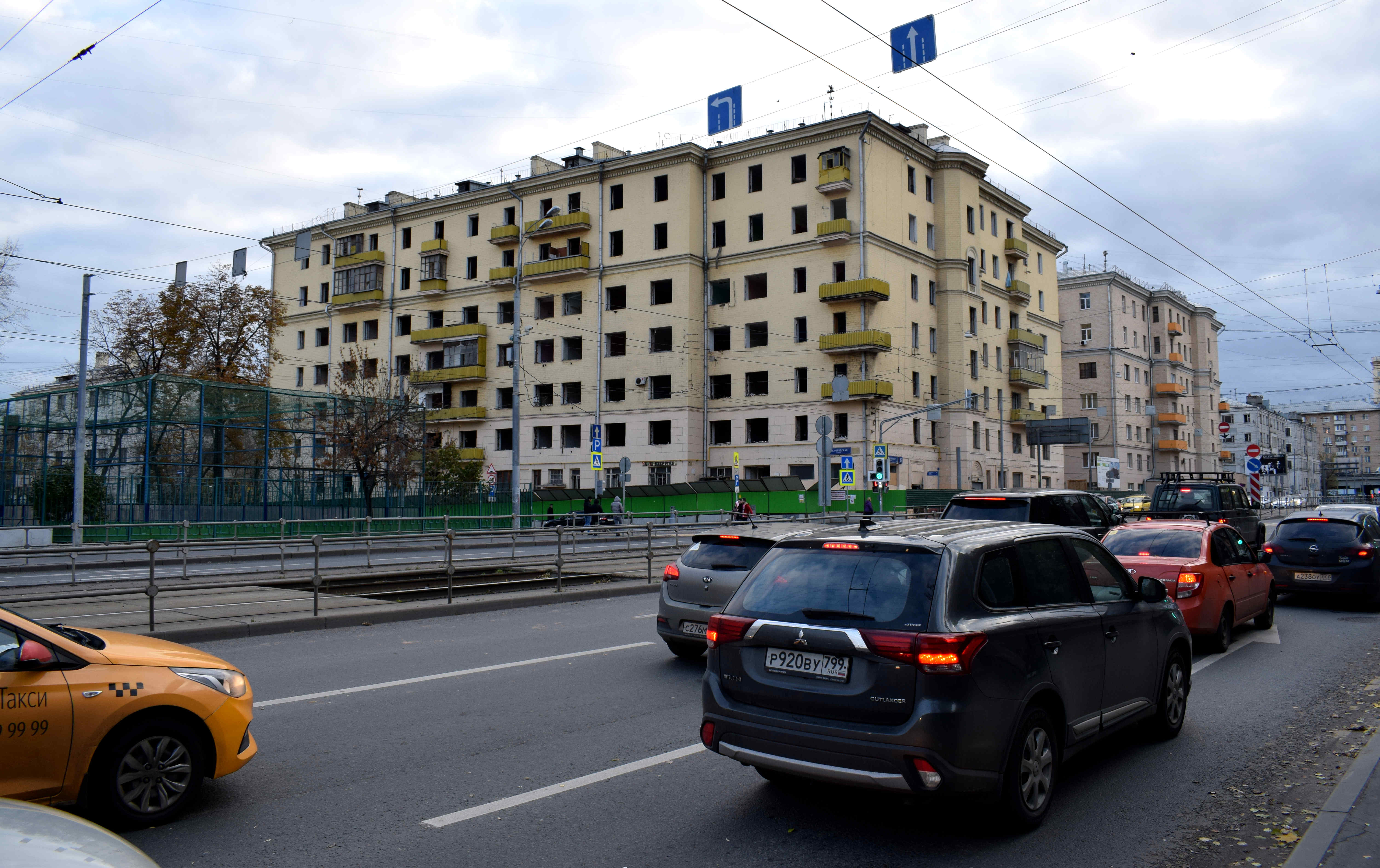 These buildings were erected in the 1920’s and are some of the earliest examples of constructivist architecture in Russia and around the world. In February 2018, the city announced that they would be torn down and new buildings would be built in their place to house people who voted in favor of a controversial, renovation program.
These buildings were erected in the 1920’s and are some of the earliest examples of constructivist architecture in Russia and around the world. In February 2018, the city announced that they would be torn down and new buildings would be built in their place to house people who voted in favor of a controversial, renovation program.
When I heard the news back then, I immediately rushed to the area to take photos of these buildings while they were still fully in tact.
At the time, I couldn’t really believe they would tear down such a beautiful building. But a week ago, I rode my bike next to it and saw all the windows had been removed. It looks like the demolition will indeed happen. In a few short weeks, one of the earliest examples of constructivist architecture in the entire world will be razed to the ground.
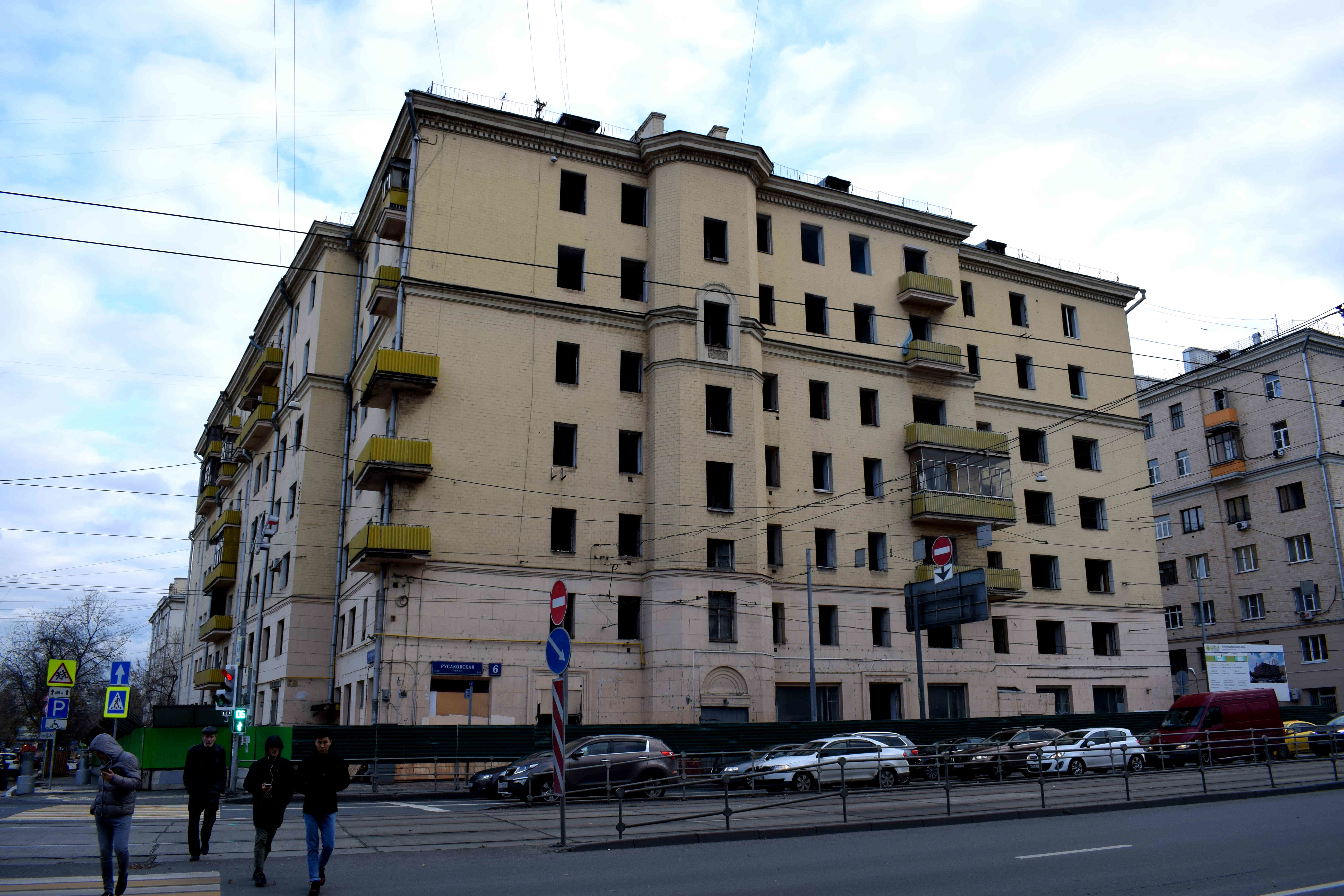 This isn’t some random building with no historical value. For almost an entire century, it formed the heart and soul of Rusakovskaya street. These are those buildings after a rainy day in 1953.
This isn’t some random building with no historical value. For almost an entire century, it formed the heart and soul of Rusakovskaya street. These are those buildings after a rainy day in 1953.
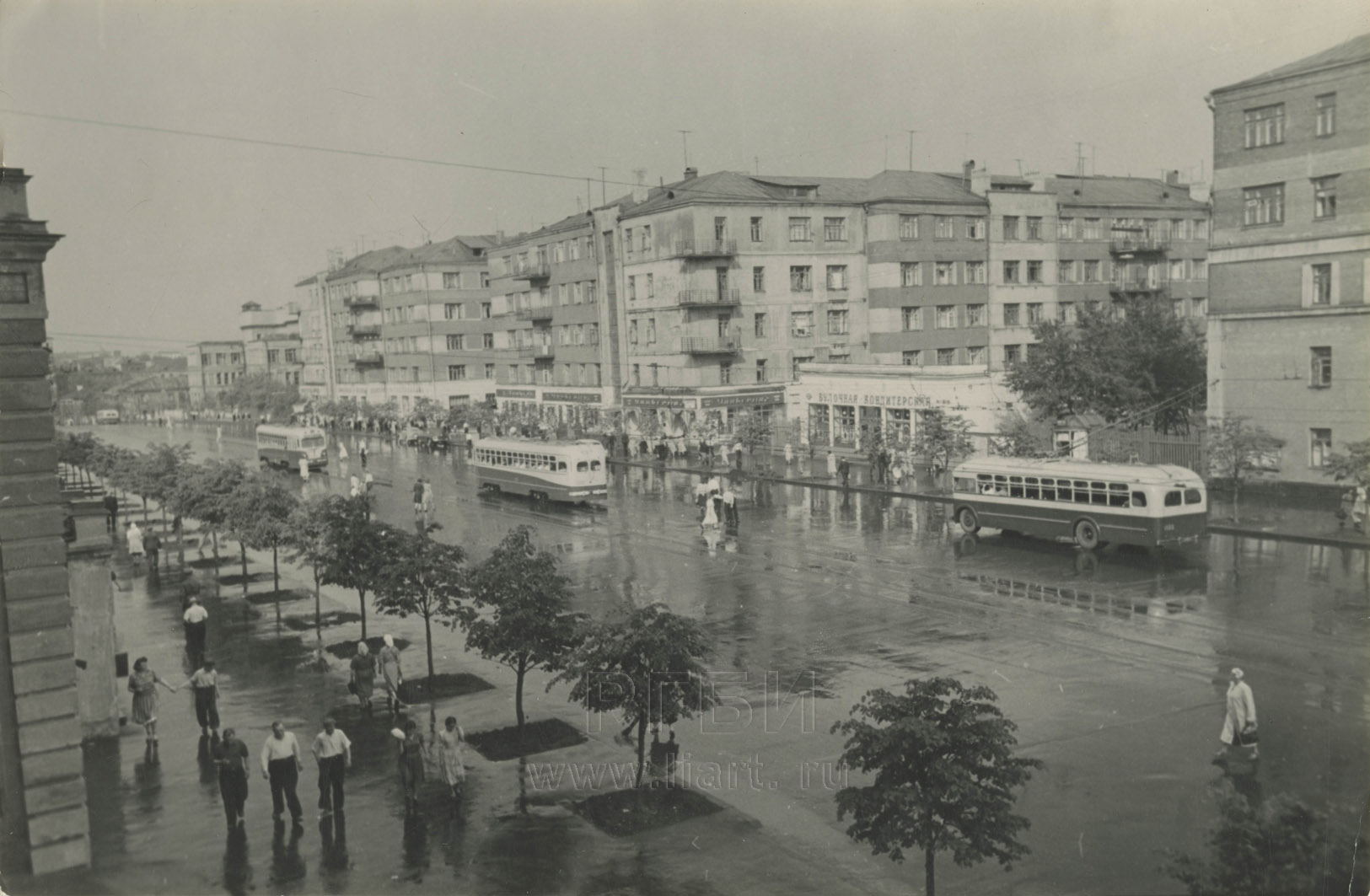 Originally the buildings were only five stories high. But in the decades that followed two additional stories were added, giving them their current height of seven stories. You can see them on the right side of this photo in 1988, in the last days of the Soviet Union before it collapsed.
Originally the buildings were only five stories high. But in the decades that followed two additional stories were added, giving them their current height of seven stories. You can see them on the right side of this photo in 1988, in the last days of the Soviet Union before it collapsed.
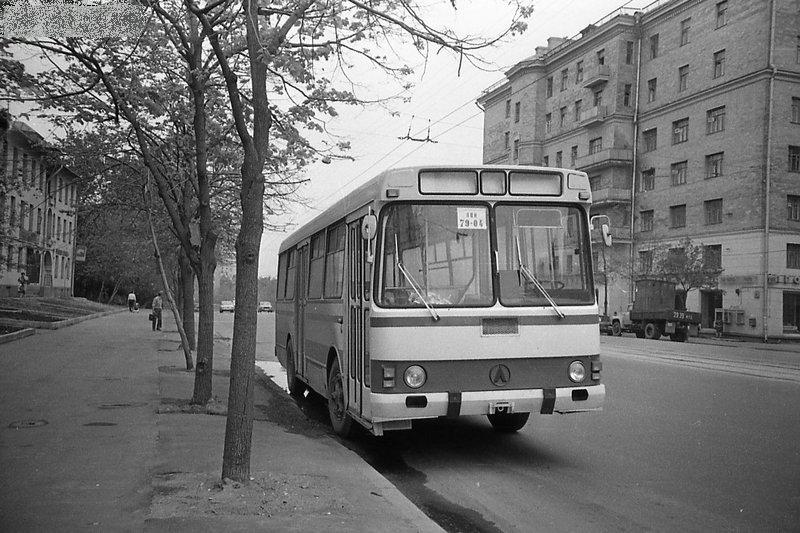
Several decades later, the building still stands in the same place, abandoned and forgotten, and soon to be torn down forever. 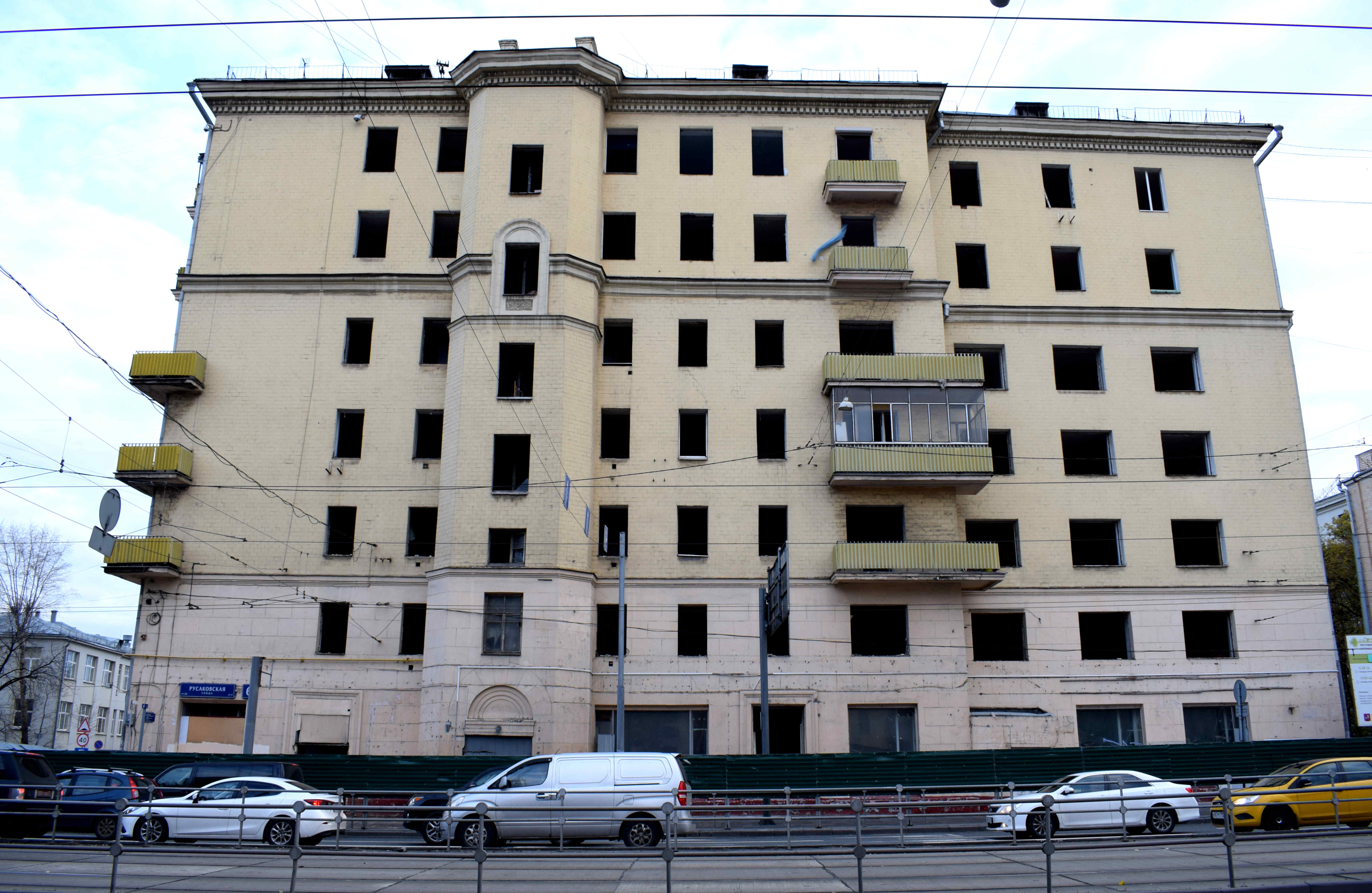 The decision to tear down this building is especially perplexing, given the fact that right across the street you have historic buildings from the same time period in the 1920’s that were renovated in the 2000’s. Today they are the most beautiful apartments in this section of Moscow. In other words, you have a perfect example of how buildings from this time period could be preserved, right across the street.
The decision to tear down this building is especially perplexing, given the fact that right across the street you have historic buildings from the same time period in the 1920’s that were renovated in the 2000’s. Today they are the most beautiful apartments in this section of Moscow. In other words, you have a perfect example of how buildings from this time period could be preserved, right across the street.
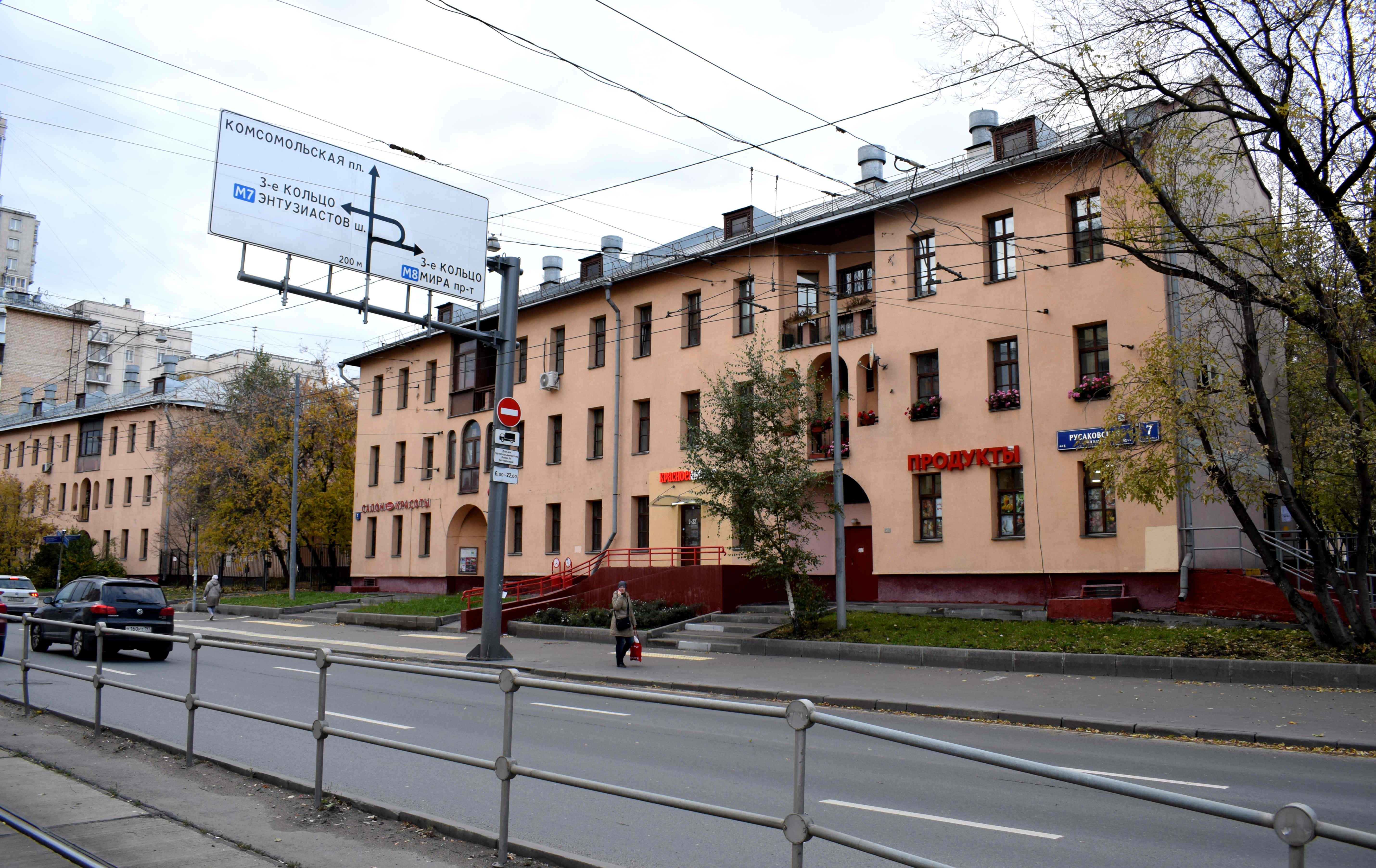 But of course, this falls on deaf ears when it comes to city officials who do not value their own history and prefer to just tear it all down.
But of course, this falls on deaf ears when it comes to city officials who do not value their own history and prefer to just tear it all down.
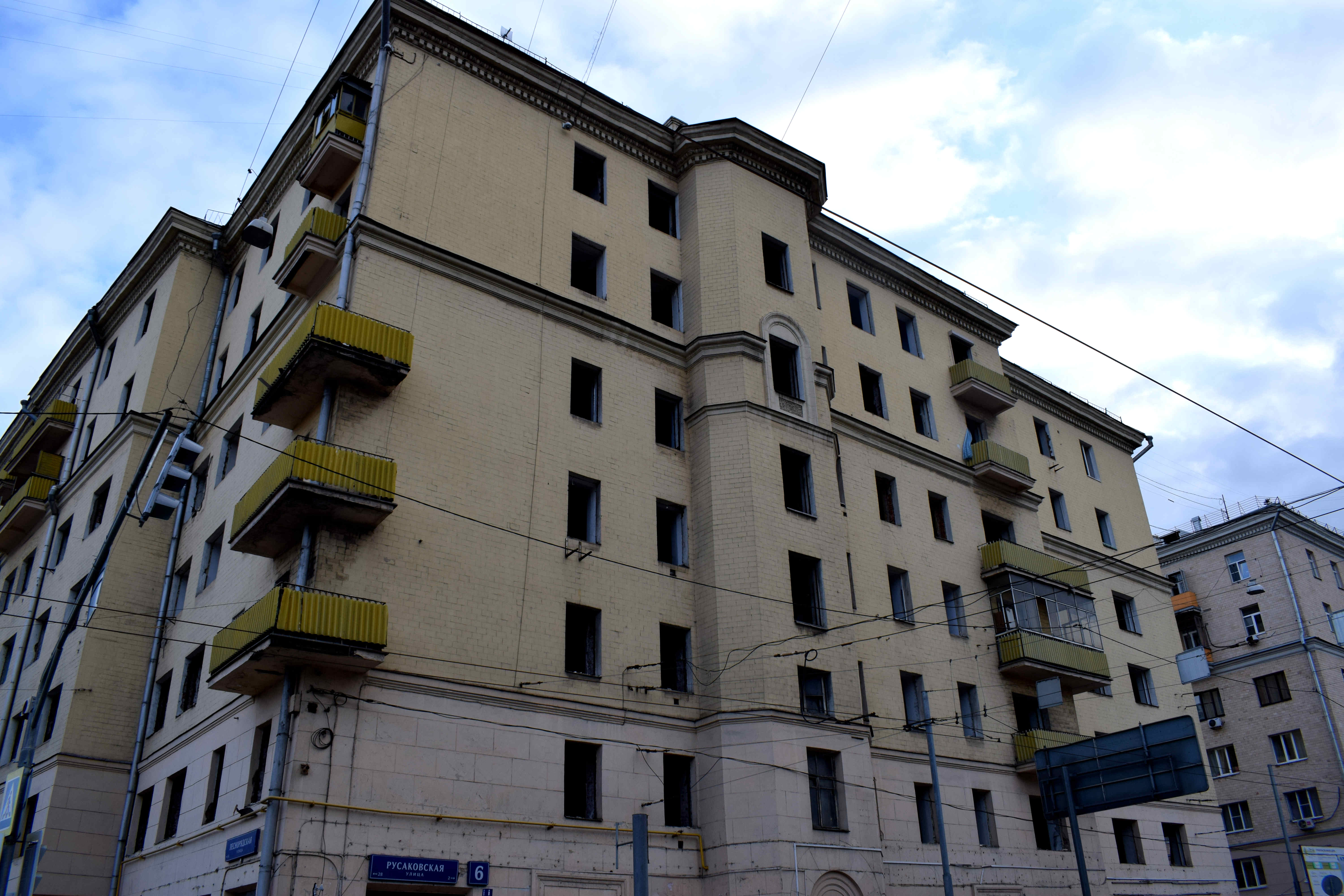 Rusakovskaya street, where the building is located, is one of the last major roads in Moscow that still has trams running on it.
Rusakovskaya street, where the building is located, is one of the last major roads in Moscow that still has trams running on it.
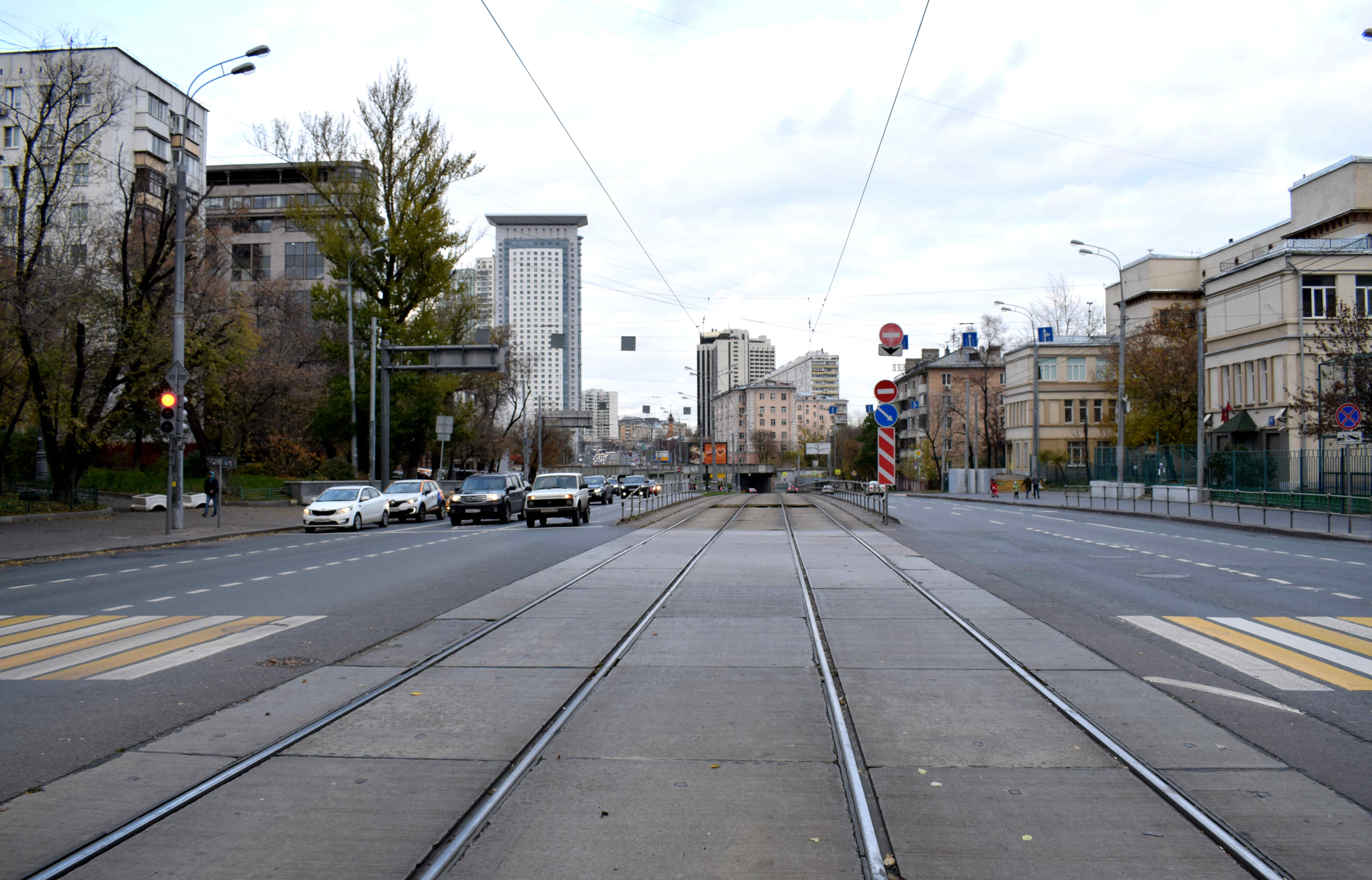 Nearly forty years earlier in 1981, we see the street had a lot more trees and greenery, most of which has been cut down since then.
Nearly forty years earlier in 1981, we see the street had a lot more trees and greenery, most of which has been cut down since then.
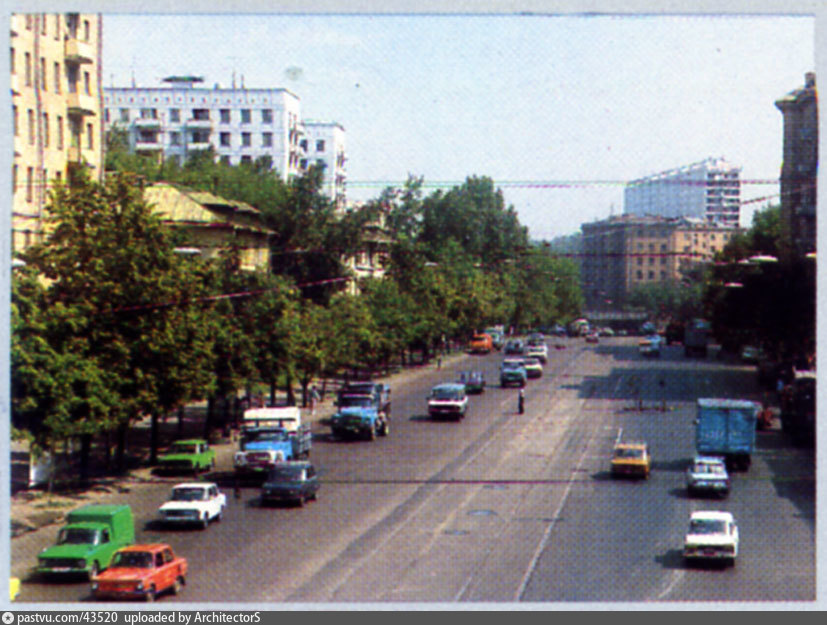
The building Русаковскова 6 has stood empty since the 2000s when a commission by Moscow’s former mayor Yury Luzhkov declared the building too dangerous to live in. The residents were moved out against their will to other areas of Moscow, mostly near metro Bulvar Rossokovskogo, the last metro stop on the red line.
The city at the time planned to demolish the buildings and build a huge parking lot in their space. But the commission was disbanded later and the project never realized. The building has stood empty in this area for over a decade.
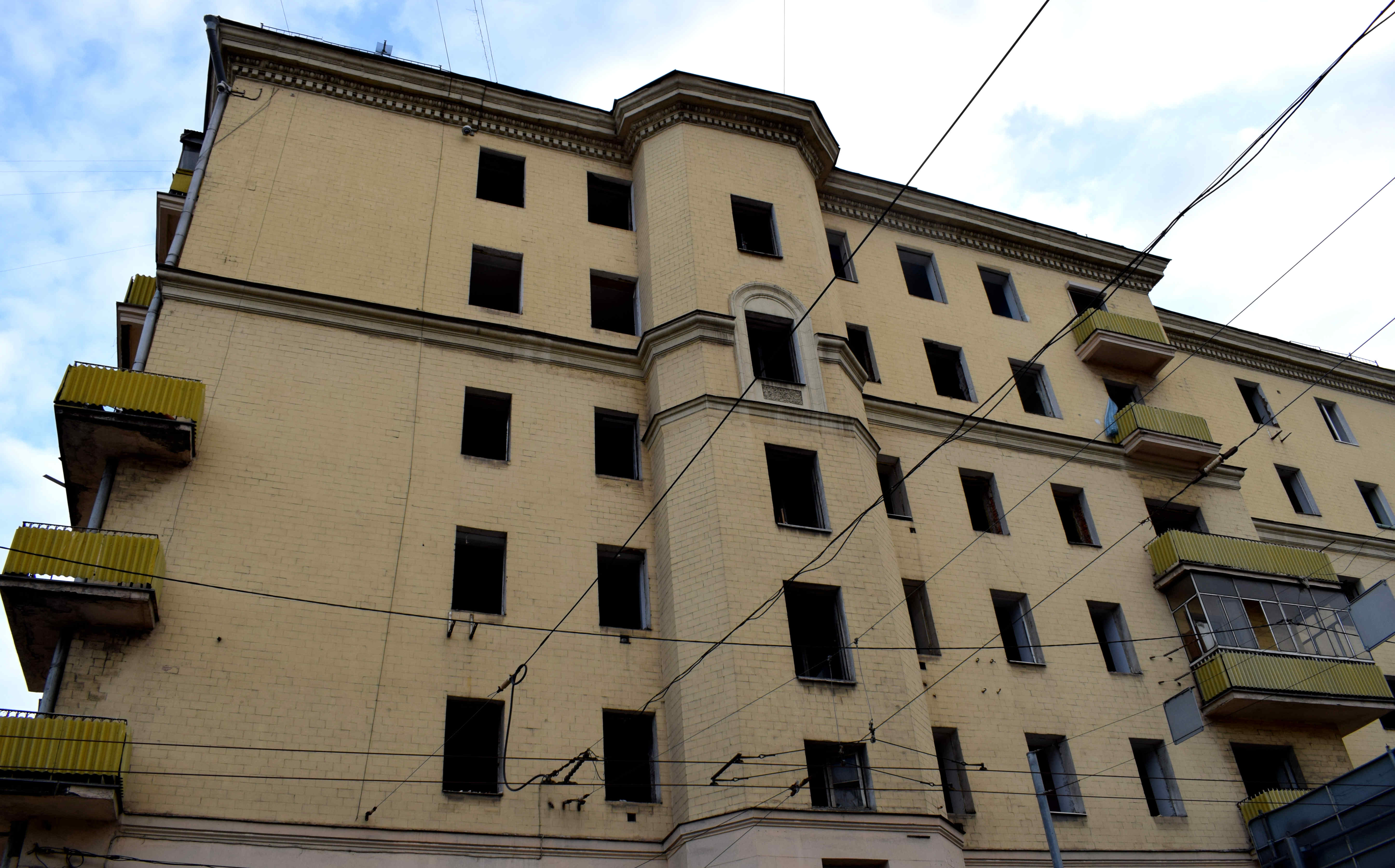 Despite being empty, there was always hope that it would eventually be reconverted to modern use. It may not win any awards for being the most beautiful building in Russia. But it is a fine example of early Soviet architecture, that many businesses or people would happily settle in.
Despite being empty, there was always hope that it would eventually be reconverted to modern use. It may not win any awards for being the most beautiful building in Russia. But it is a fine example of early Soviet architecture, that many businesses or people would happily settle in.
But it looks like the building’s fate has been sealed. A large metal fence has been erected that now surrounds the building and there are all the marks of a demolition being planned.
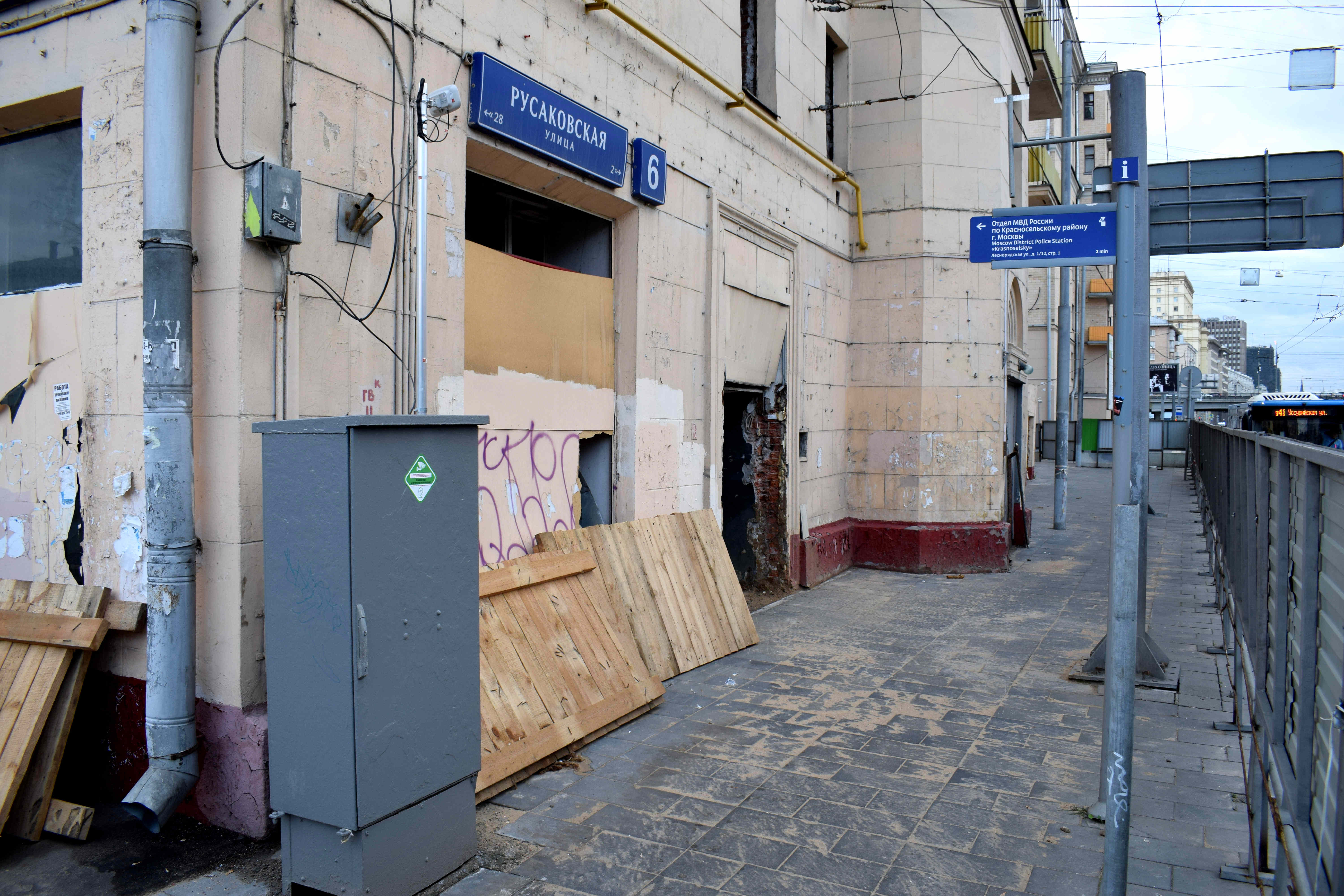 A view of the balconies that once belonged to families who lived here and were forced to move out.
A view of the balconies that once belonged to families who lived here and were forced to move out.
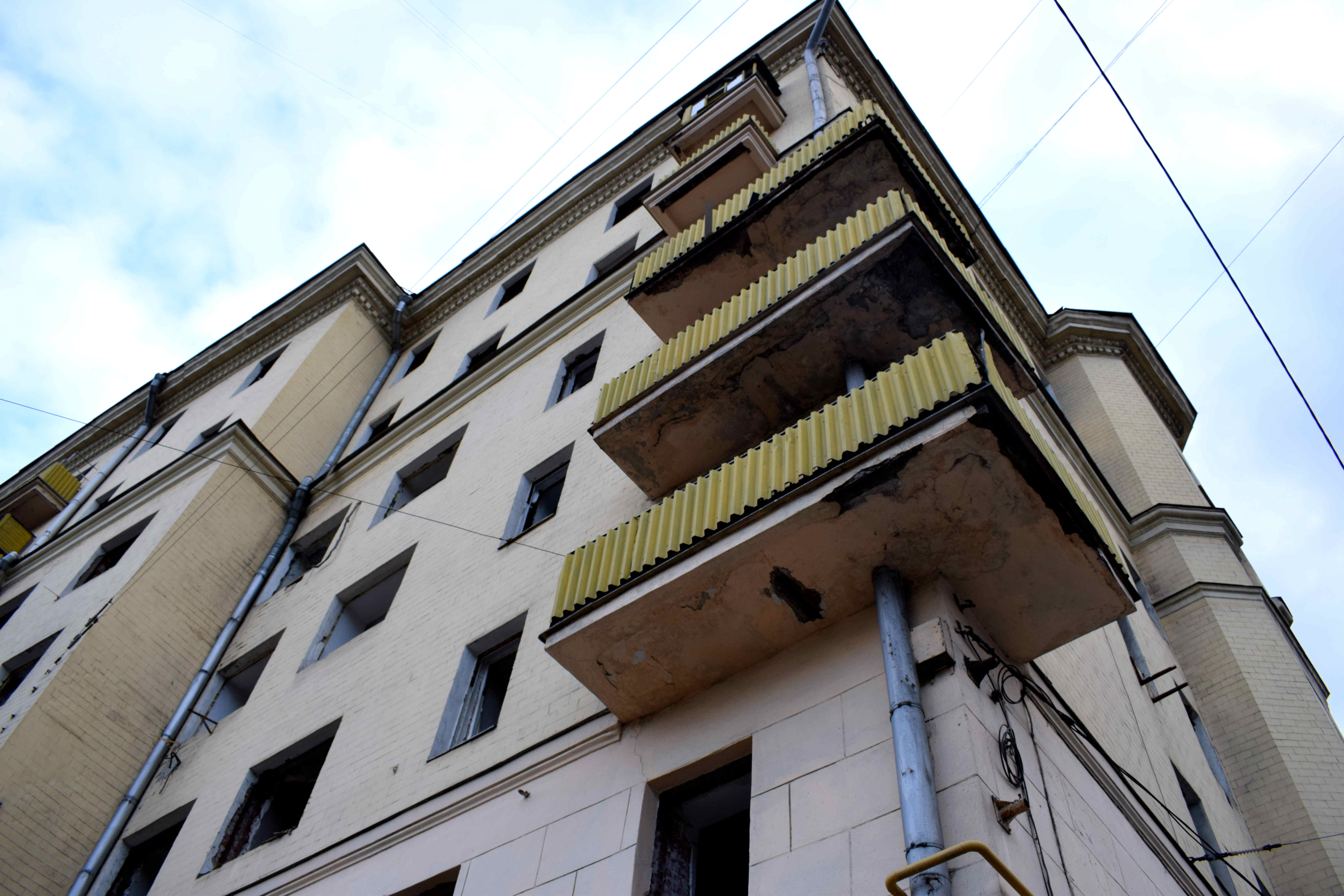 It’s not just the yellow building on Русаковская 6 that is being torn down. The grey buildings nearby are next in line to be demolished. These buildings were built at the same time in 1927 and despite their historical status, are going to be destroyed forever. R.I.P Русаковская улица, дом 2, строение 1 & 2.
It’s not just the yellow building on Русаковская 6 that is being torn down. The grey buildings nearby are next in line to be demolished. These buildings were built at the same time in 1927 and despite their historical status, are going to be destroyed forever. R.I.P Русаковская улица, дом 2, строение 1 & 2.
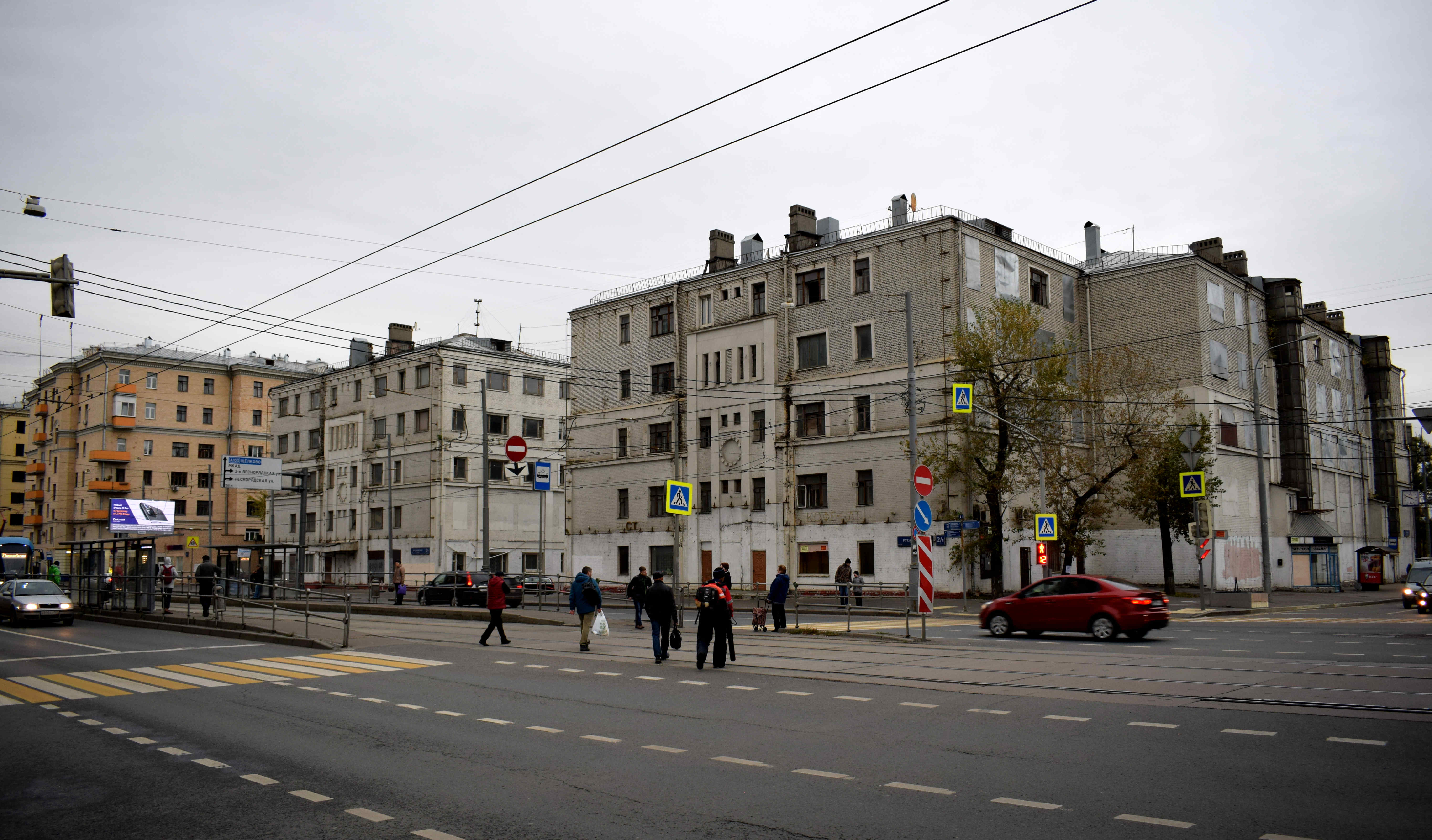 Here is how they looked back in the 1920’s and 1930’s immediately after they were built.
Here is how they looked back in the 1920’s and 1930’s immediately after they were built.
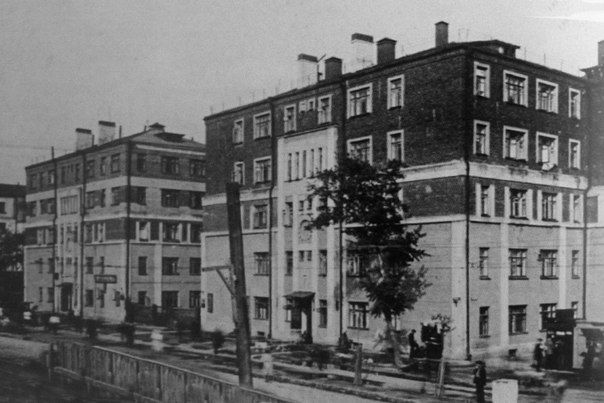
The sign reads: “Dear Muscovites, on this 3,807 meter land plot, we plan to ‘save 14 trees, re-plant no trees, and cut down 33 trees.” So much for greenery.
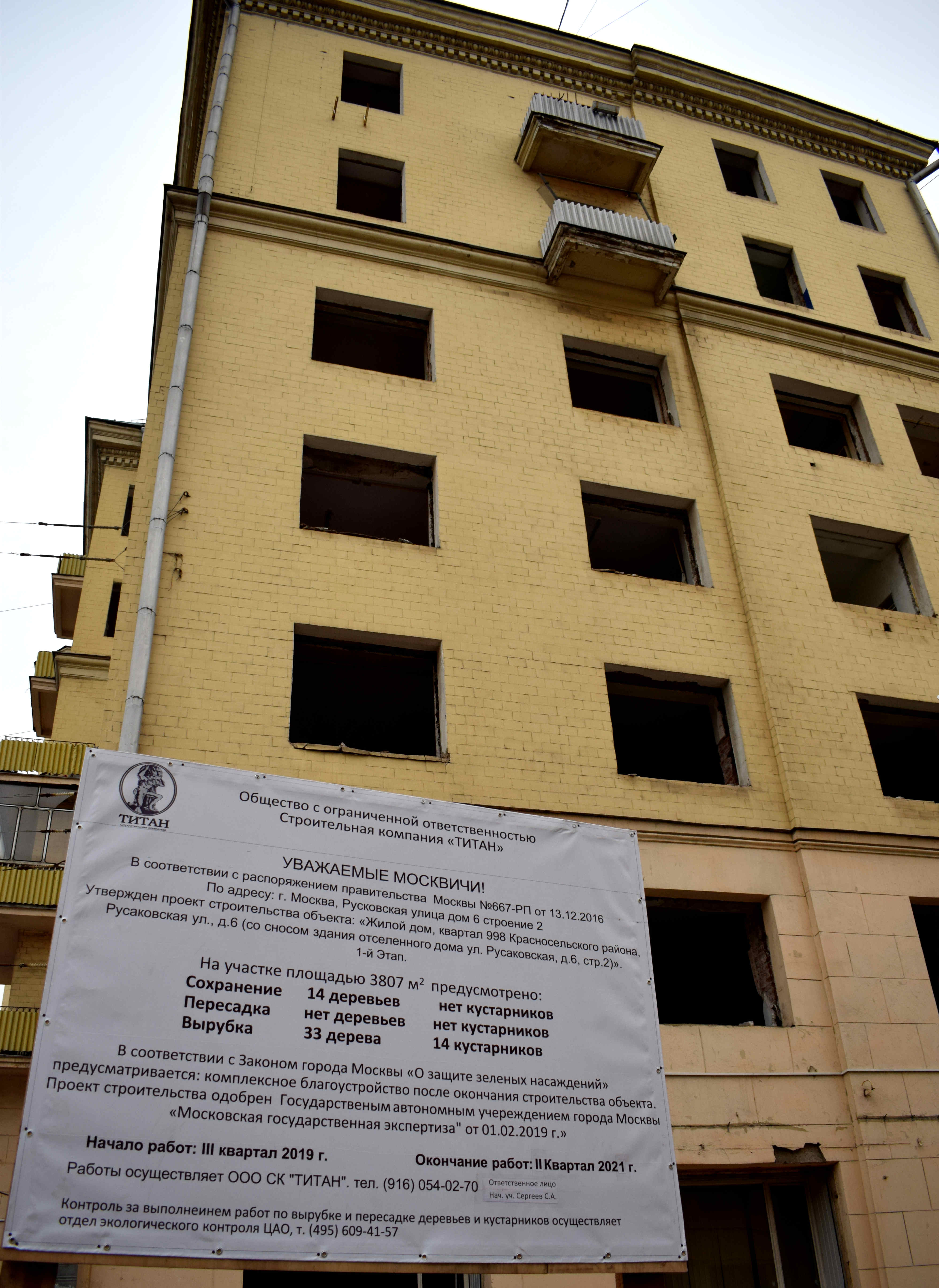 These used to be wide windows of stores offering window-shopping. Now they have been completely gutted.
These used to be wide windows of stores offering window-shopping. Now they have been completely gutted.
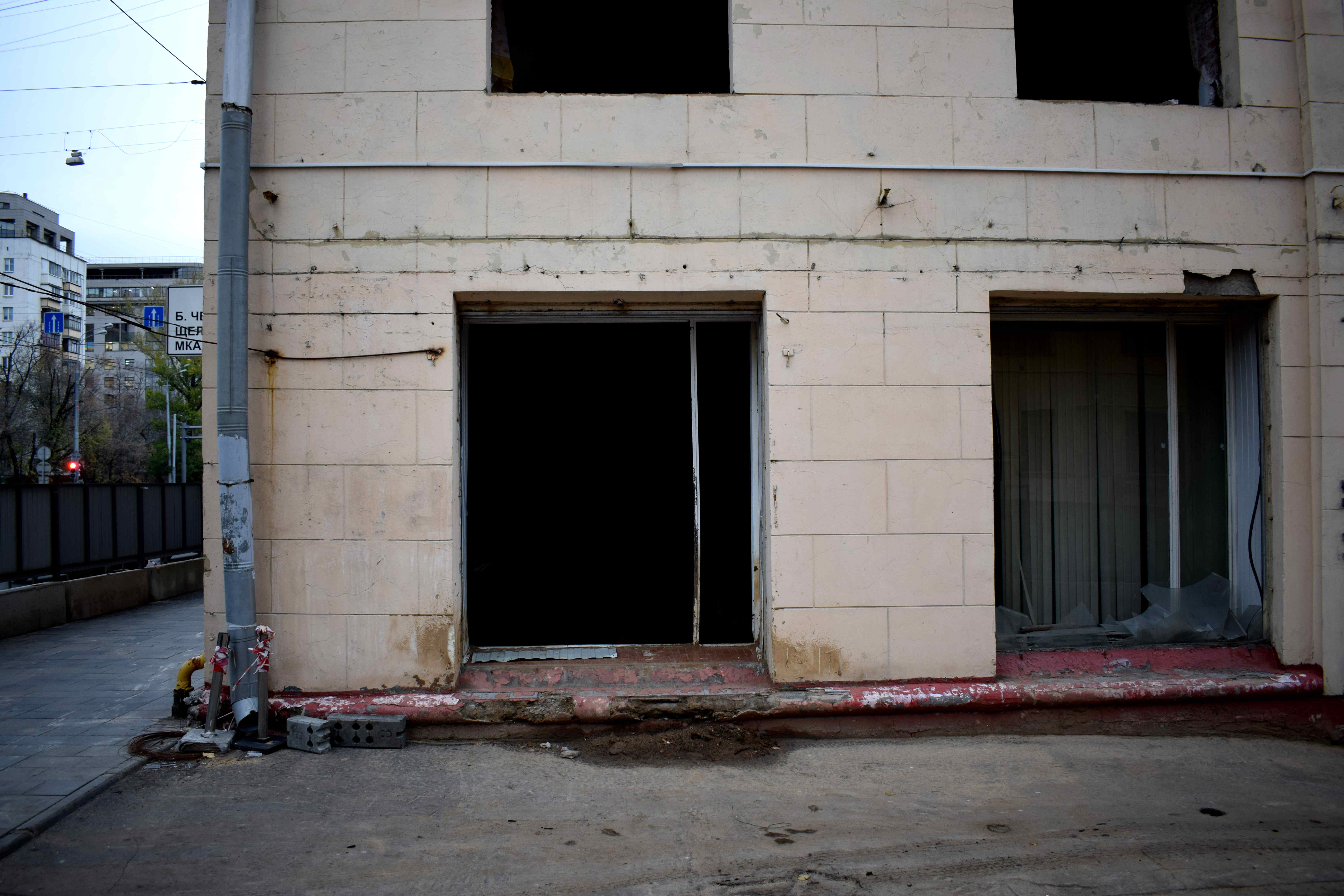 All the other windows are also gone.
All the other windows are also gone.
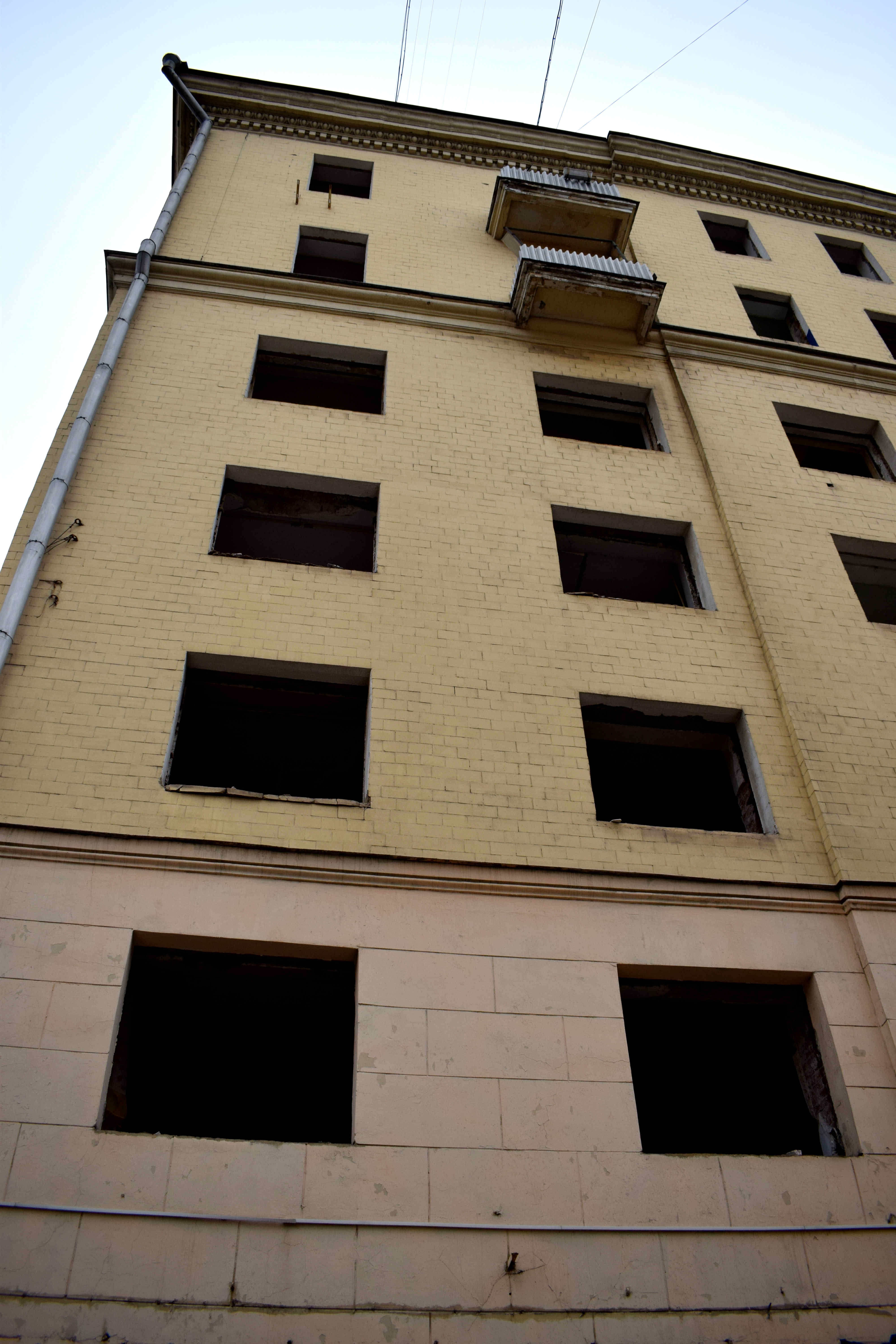
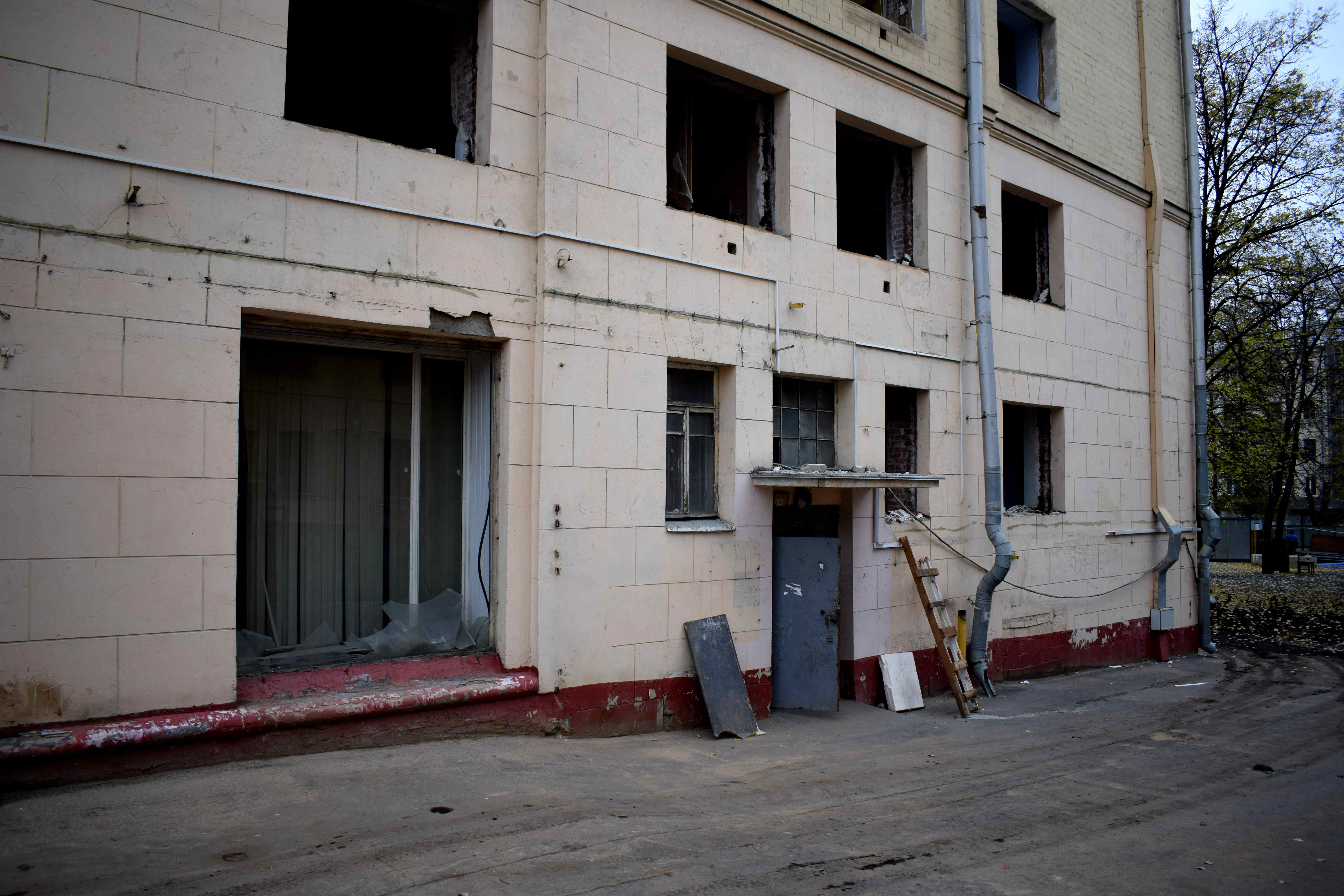 A proper renovation could have turned this little part of Krasnoselsky into a beautiful mixed-used center. Modern lofts could be sold, co-working spaces and hip cafes set up. There are tons of examples of old buildings around Moscow that have been successfully converted and are thriving now. Just take a look at ArtPlay or Depo, where old, factories that had fallen into disrepair were preserved instead of being torn down. Today, they are some of the most popular parts of the city.
A proper renovation could have turned this little part of Krasnoselsky into a beautiful mixed-used center. Modern lofts could be sold, co-working spaces and hip cafes set up. There are tons of examples of old buildings around Moscow that have been successfully converted and are thriving now. Just take a look at ArtPlay or Depo, where old, factories that had fallen into disrepair were preserved instead of being torn down. Today, they are some of the most popular parts of the city.
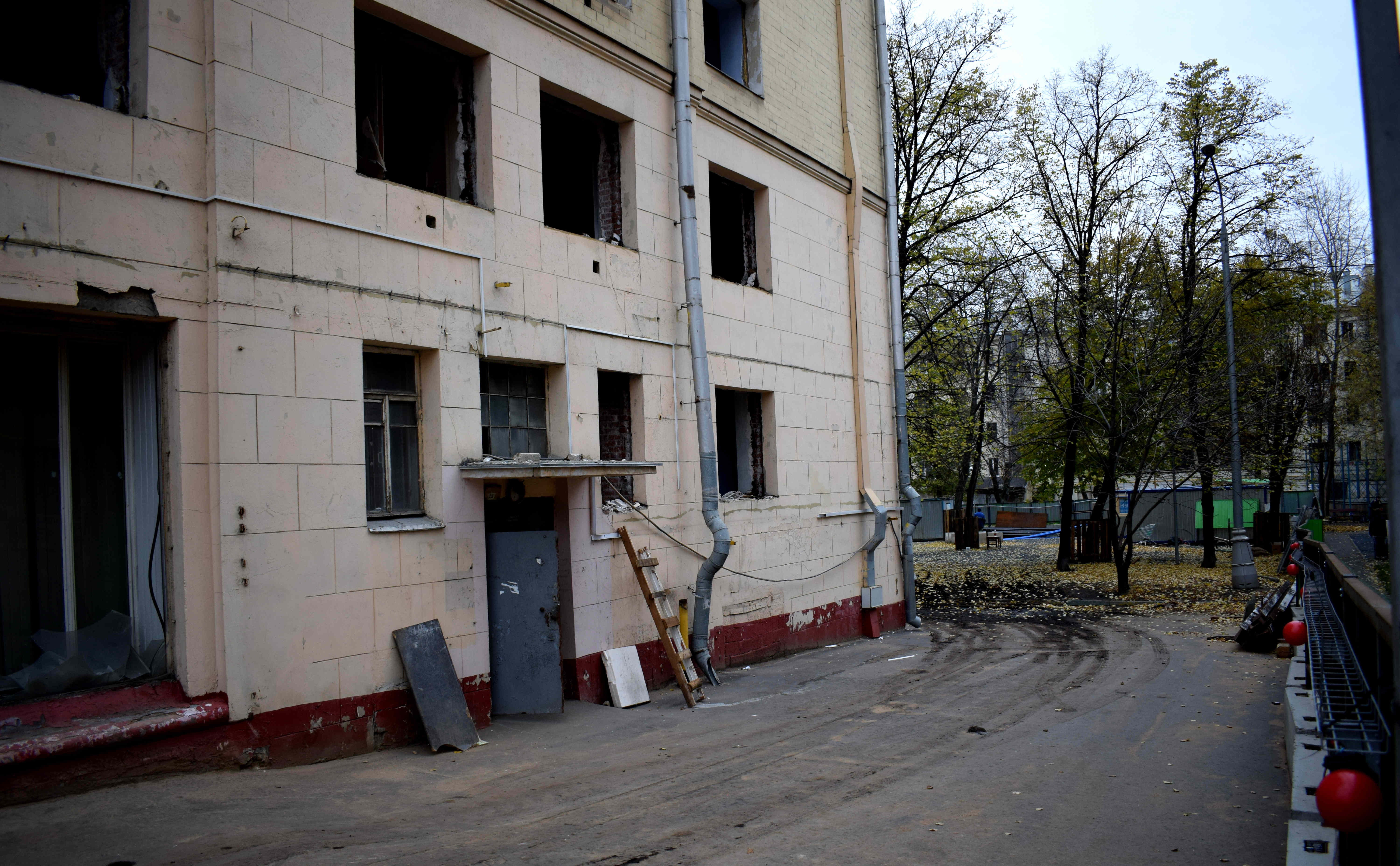 You literally have buildings right across the street built at the same time in 1926 which were preserved. Why couldn’t the city do the same with these constructivist buildings?
You literally have buildings right across the street built at the same time in 1926 which were preserved. Why couldn’t the city do the same with these constructivist buildings?
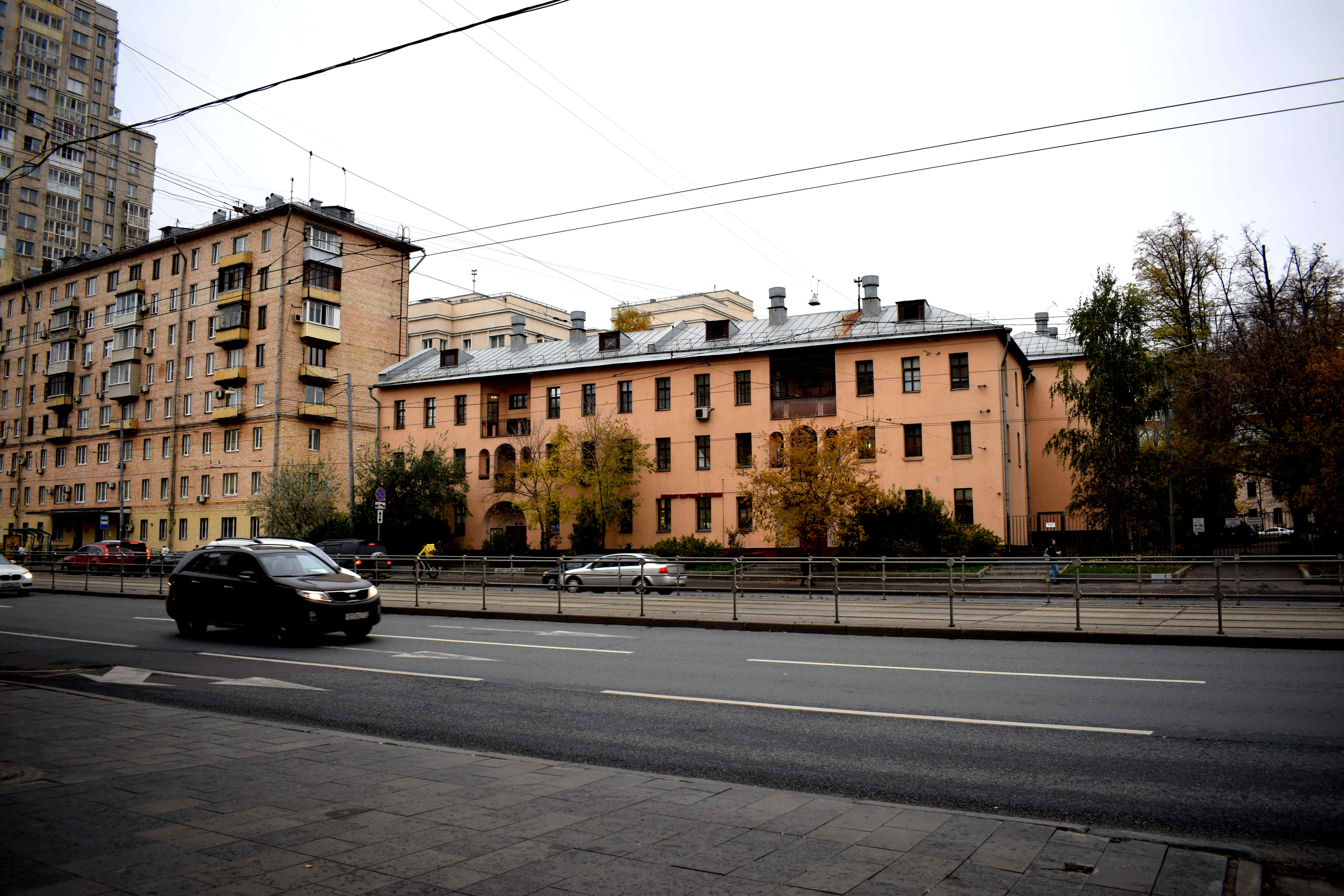 Walking further into the courtyard, we can see that half of the playground for the kids has been occupied.
Walking further into the courtyard, we can see that half of the playground for the kids has been occupied.
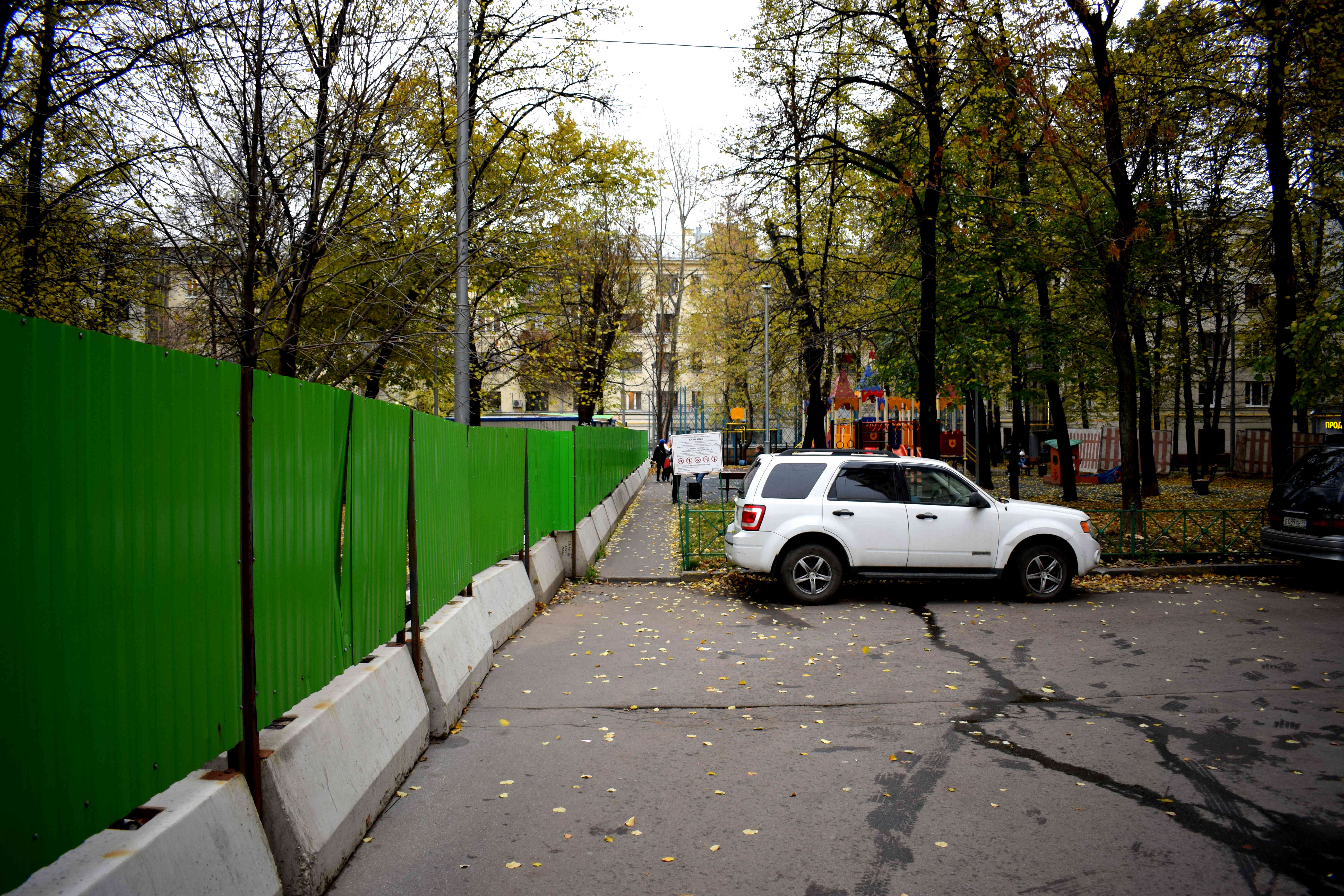 Courtyards like this are becoming a rarity in Moscow. If outside on the street there is a lot of noise from cars, in the courtyard it is quiet and peaceful. The only sound comes from kids running around, laughing and playing and the sound of leaves rustling in the wind. All of this will be a construction site soon.
Courtyards like this are becoming a rarity in Moscow. If outside on the street there is a lot of noise from cars, in the courtyard it is quiet and peaceful. The only sound comes from kids running around, laughing and playing and the sound of leaves rustling in the wind. All of this will be a construction site soon.
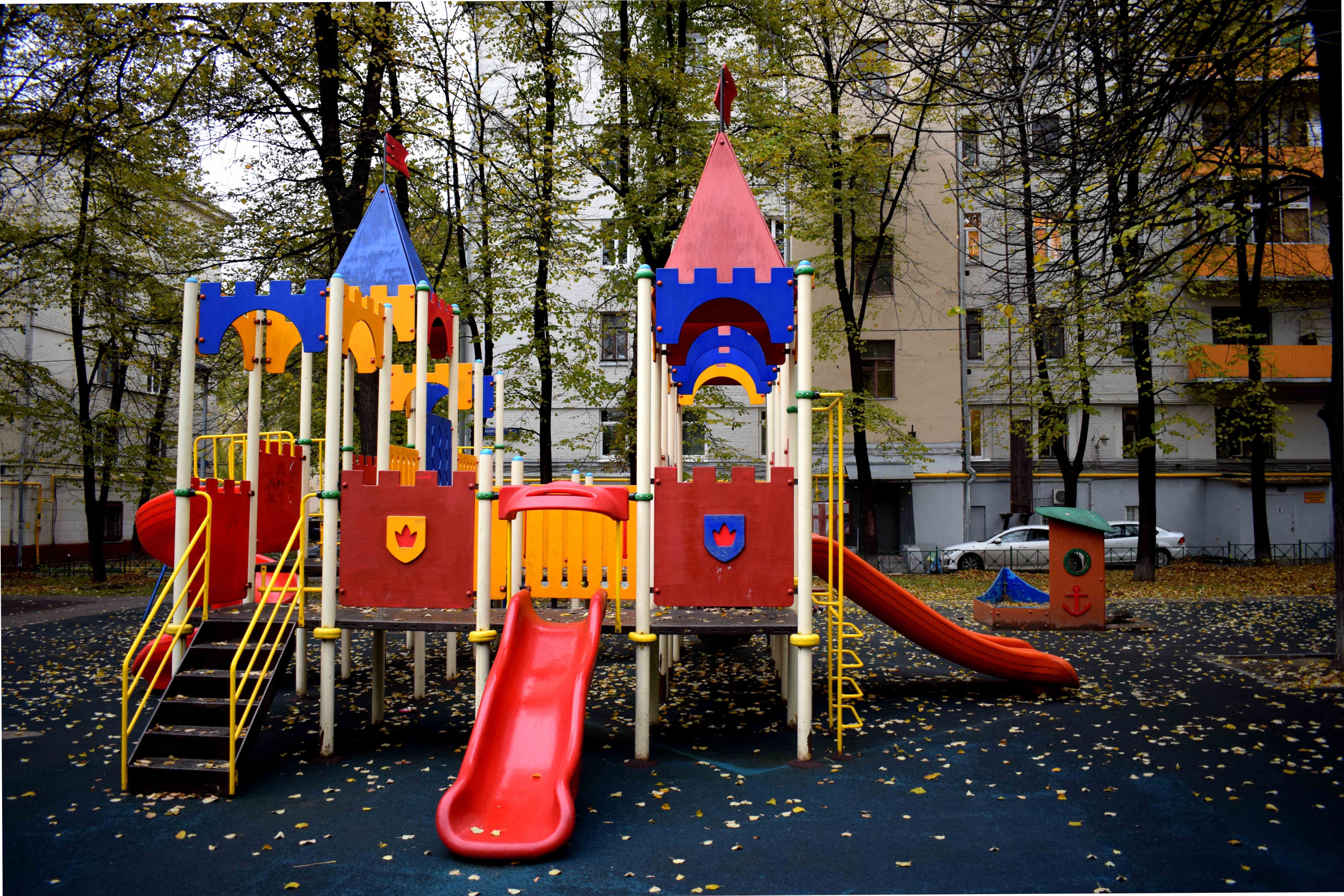 You could be anywhere in France and Germany, there’s nothing that distinguishes a place like this from similar housing in Europe. But the people who live here clearly don’t care about any of that. The residents in the building in the background voted to be included in the renovation program and to have their building torn down.
You could be anywhere in France and Germany, there’s nothing that distinguishes a place like this from similar housing in Europe. But the people who live here clearly don’t care about any of that. The residents in the building in the background voted to be included in the renovation program and to have their building torn down.
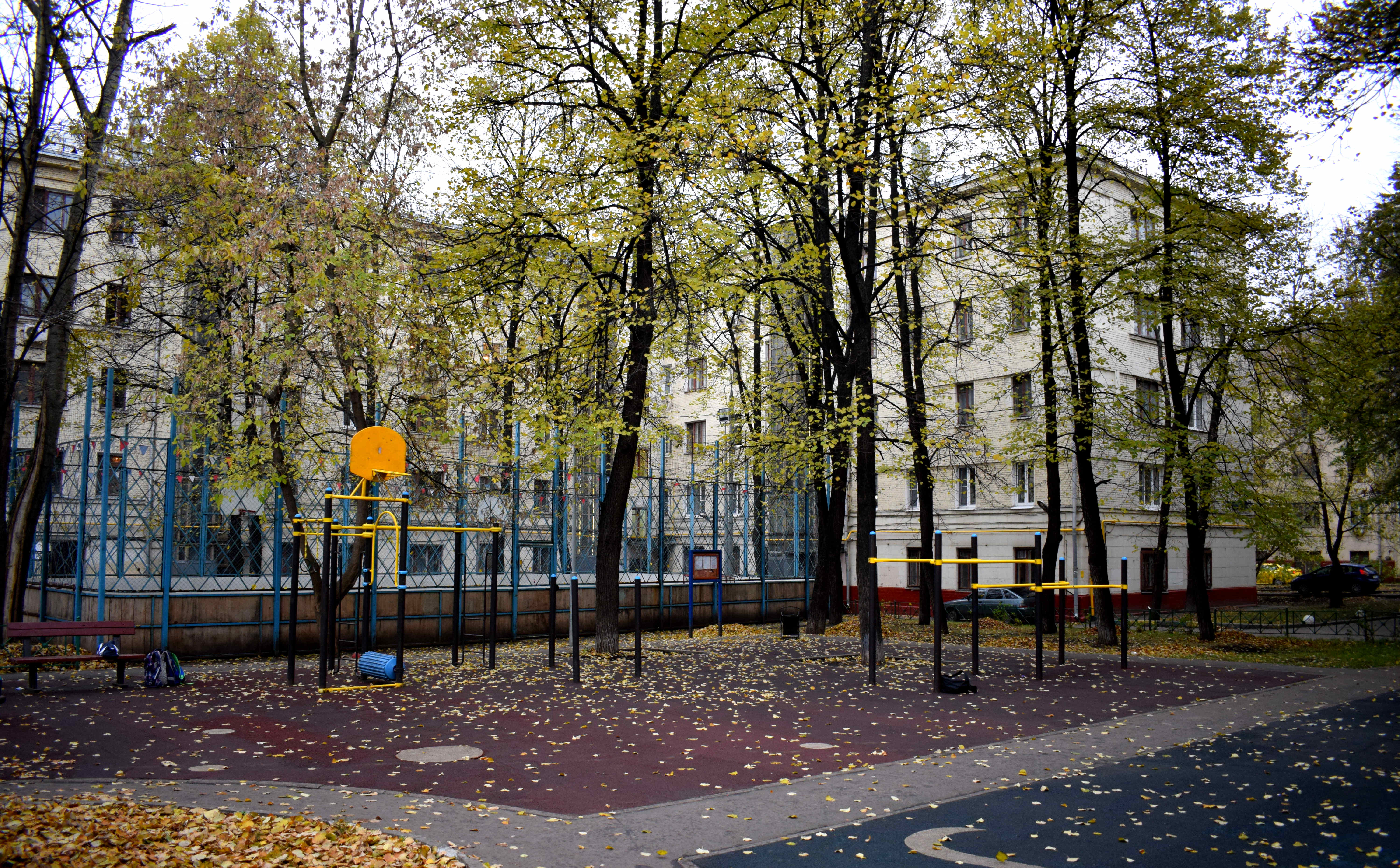 If you think this is some kind of isolated cases of construction chaos, you are mistaken. In 2017 the city passed a law on a new renovation program for all of Moscow. According to the program, 4,000 buildings just like these will be demolished.
If you think this is some kind of isolated cases of construction chaos, you are mistaken. In 2017 the city passed a law on a new renovation program for all of Moscow. According to the program, 4,000 buildings just like these will be demolished.
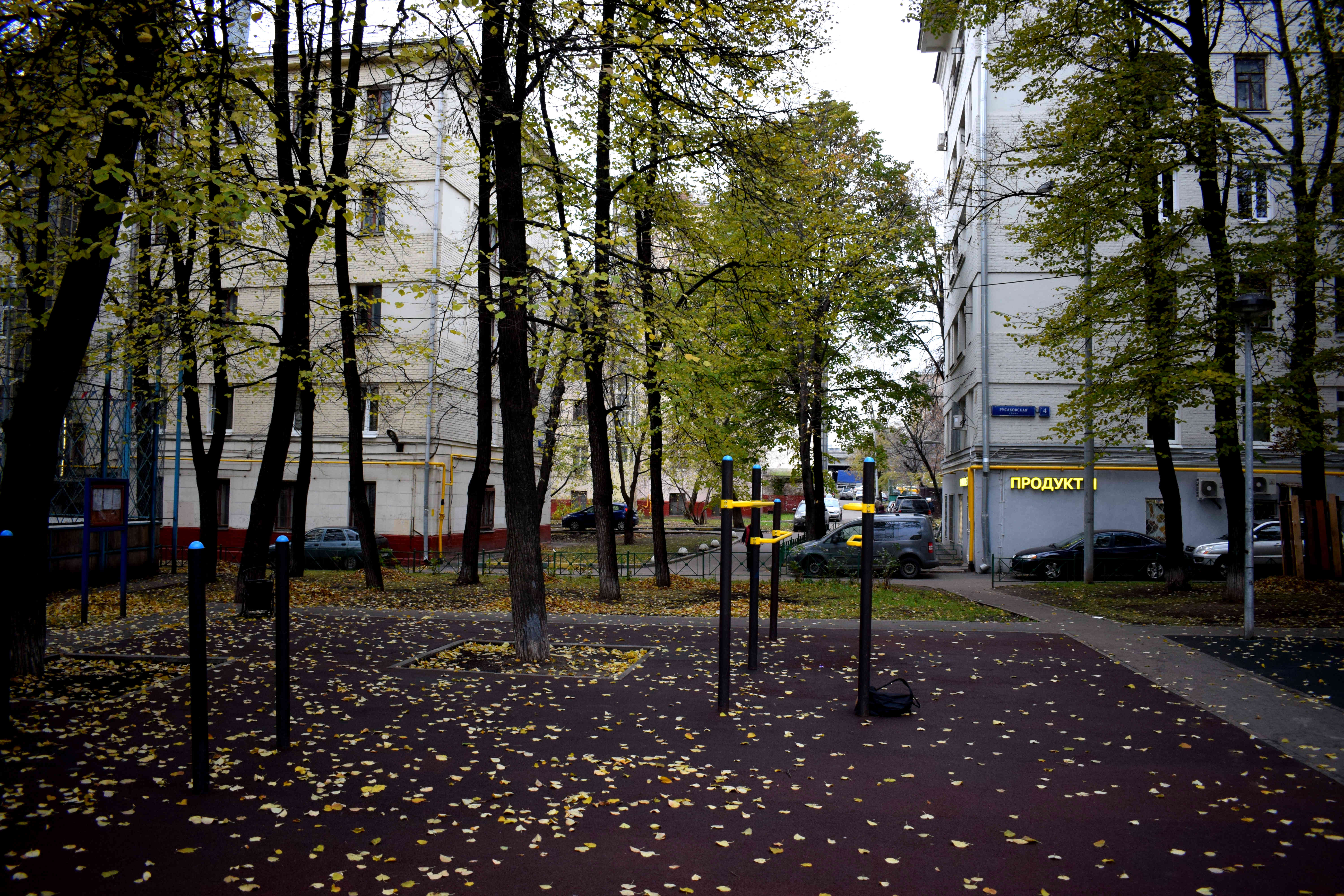 I will never understand the people that voted in favor of such destruction. How can anyone in their right mind support tearing down the neighborhood they grew up in, where their parents grew up, where all their childhood memories were formed. All because they don’t want to renovate their flat on their own or want a few extra meters of space in their kitchen.
I will never understand the people that voted in favor of such destruction. How can anyone in their right mind support tearing down the neighborhood they grew up in, where their parents grew up, where all their childhood memories were formed. All because they don’t want to renovate their flat on their own or want a few extra meters of space in their kitchen.
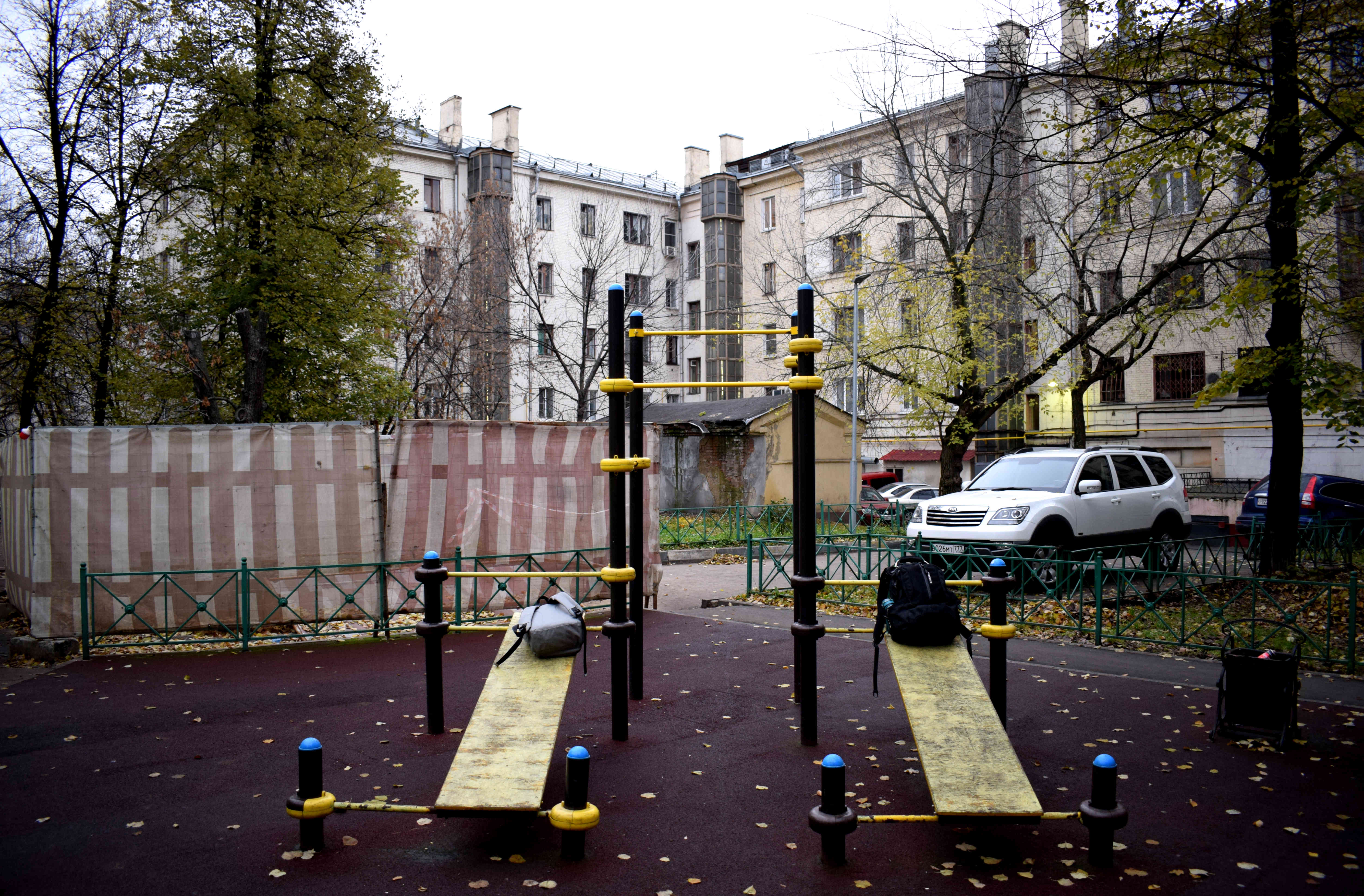 From the courtyard, you can see just how grand and majestic the building really is.
From the courtyard, you can see just how grand and majestic the building really is.
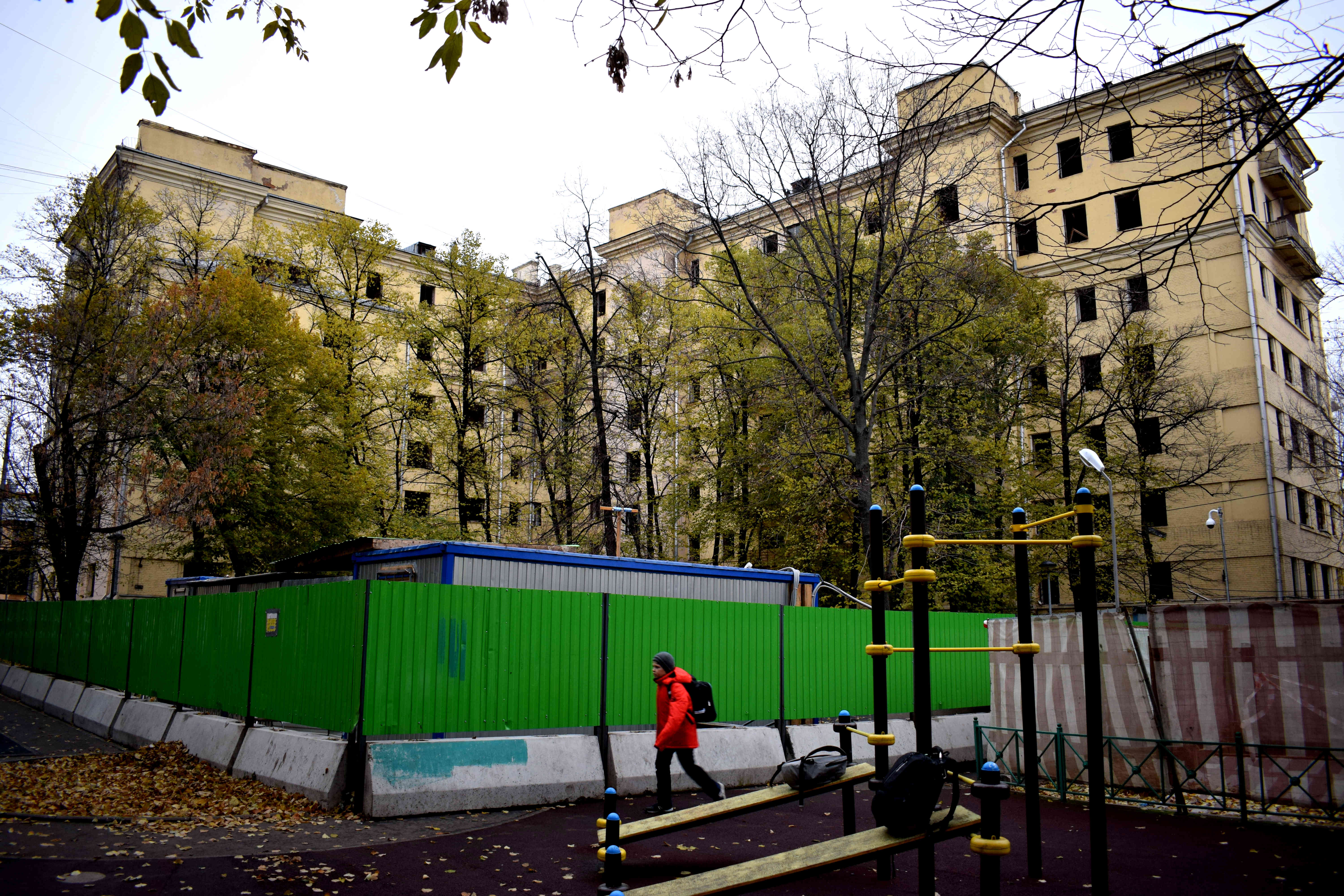 And the city is barbarically going to destroy it in the next few weeks.
And the city is barbarically going to destroy it in the next few weeks.
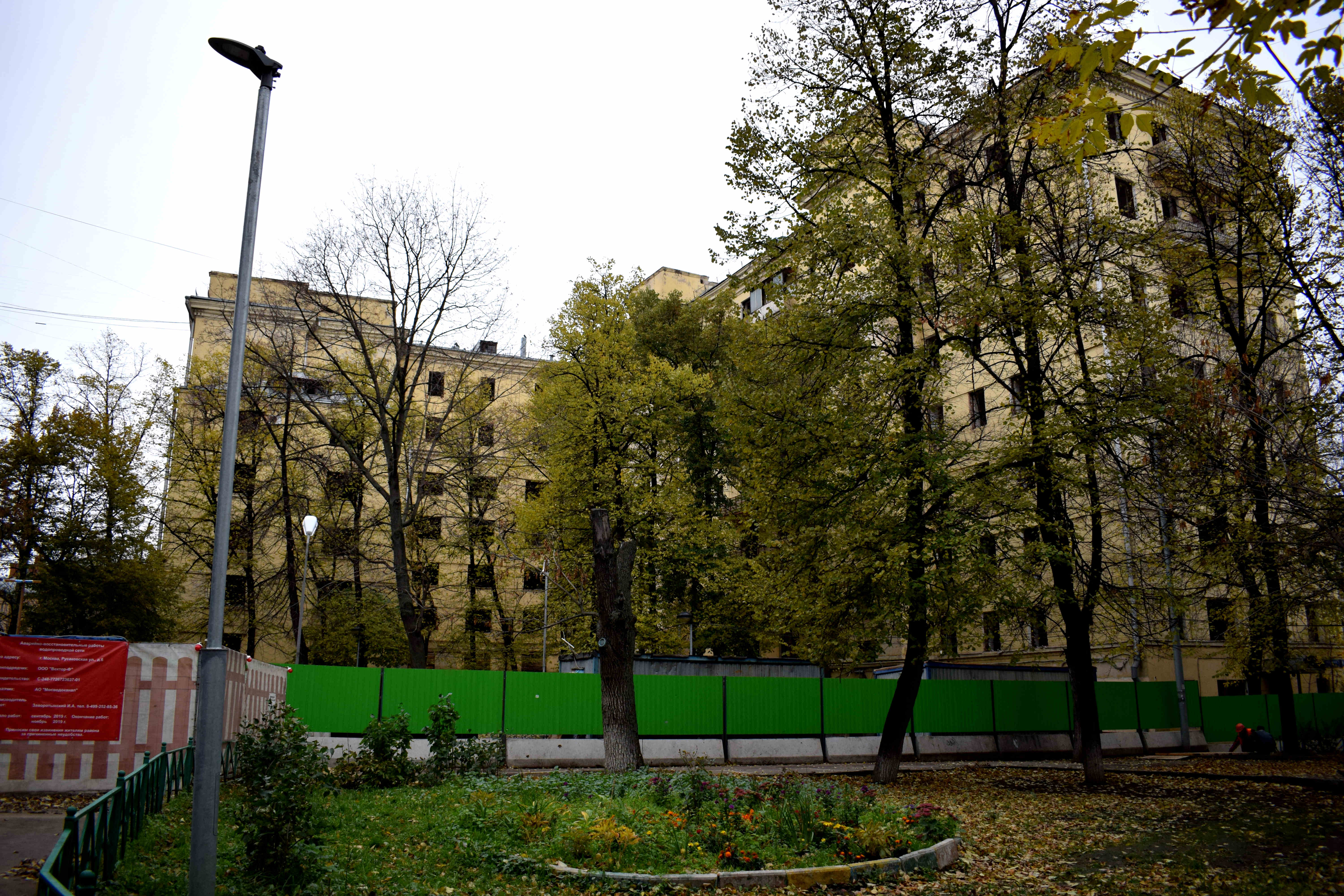 I don’t know how the construction workers sleep at night, destroying the city’s history.
I don’t know how the construction workers sleep at night, destroying the city’s history.
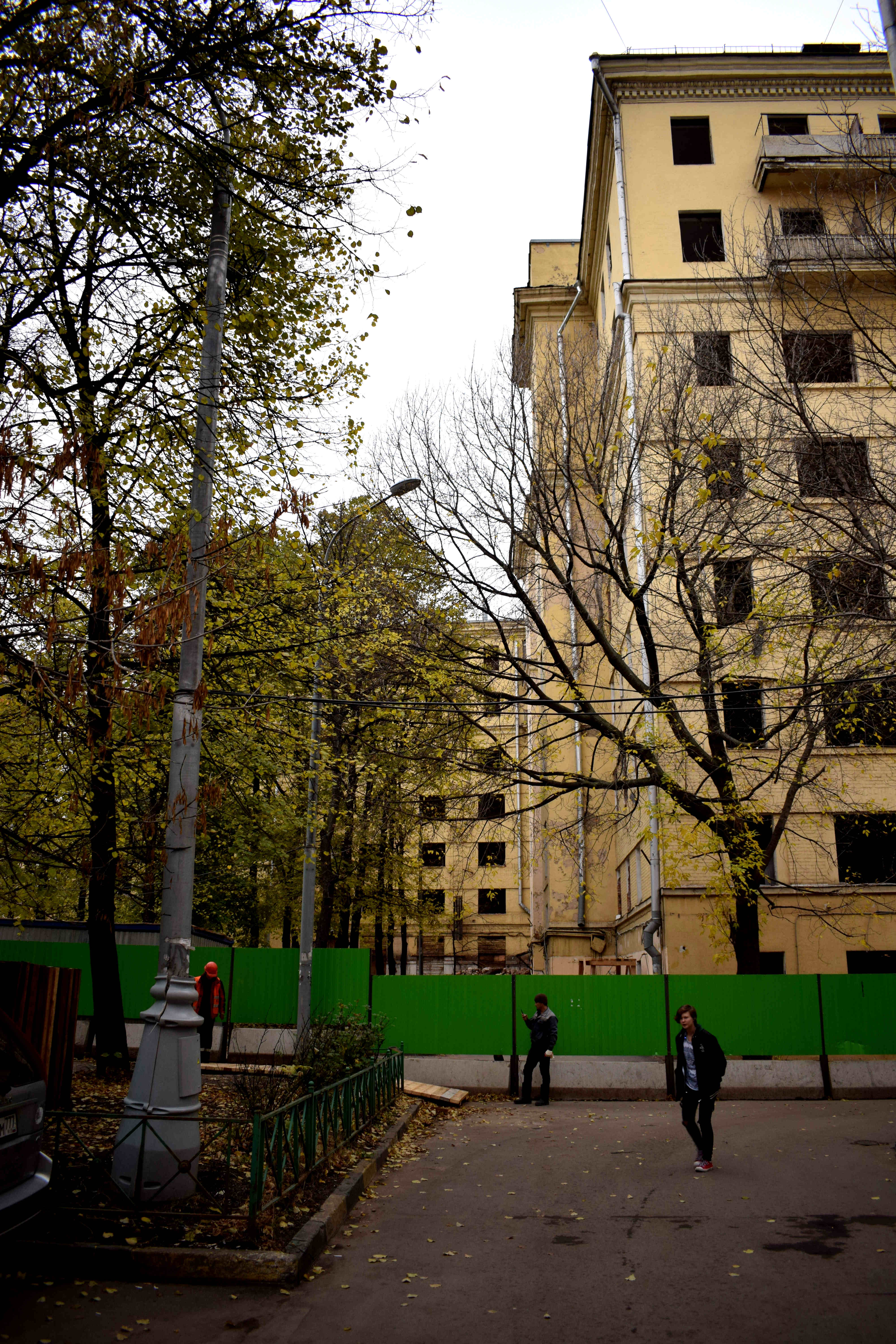 The building looks especially nice in the Autumn weather.
The building looks especially nice in the Autumn weather.
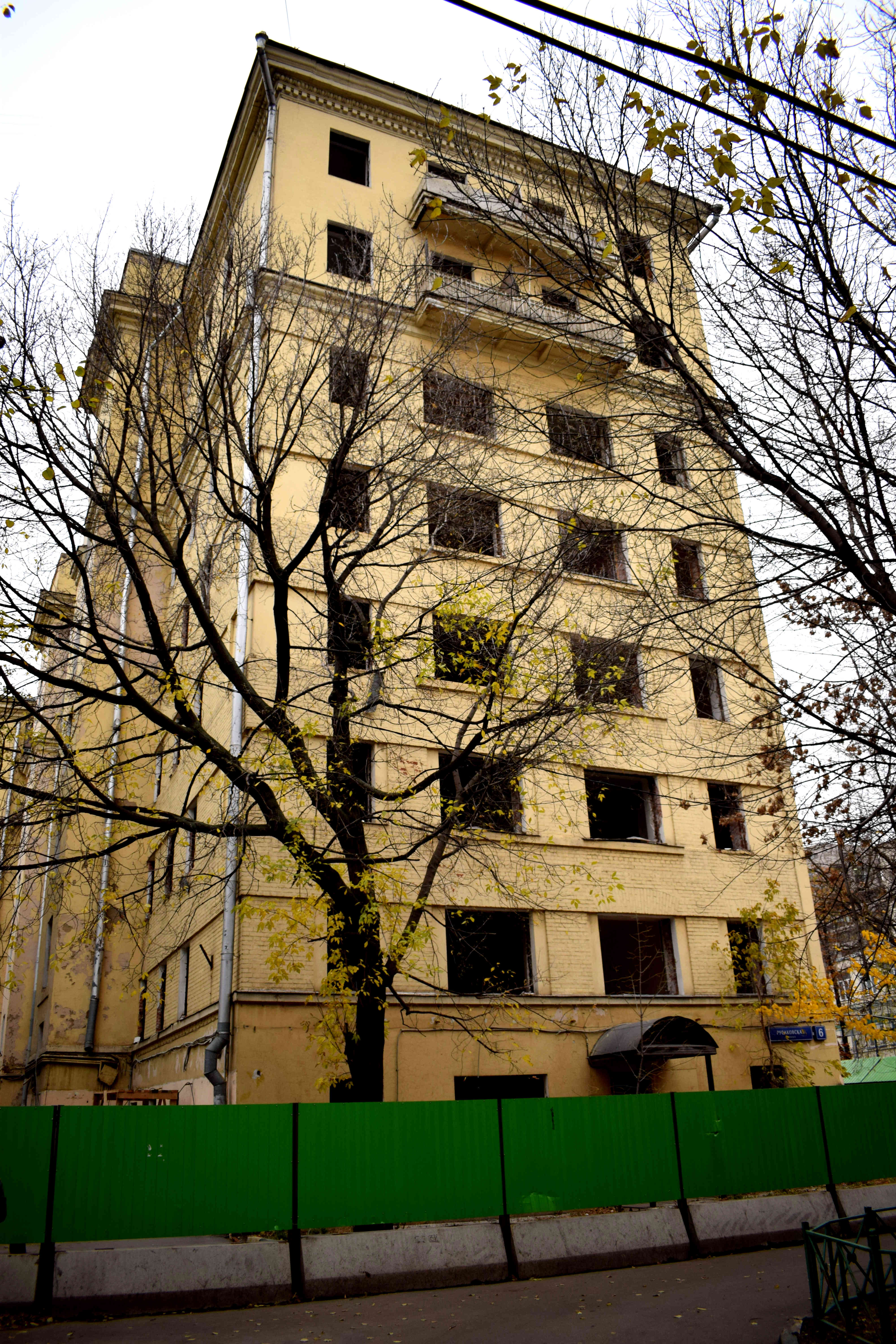 In any other city in Europe, this building would be renovated and taken care of. The people who lived in it would be proud to live in such a historic building.
In any other city in Europe, this building would be renovated and taken care of. The people who lived in it would be proud to live in such a historic building.
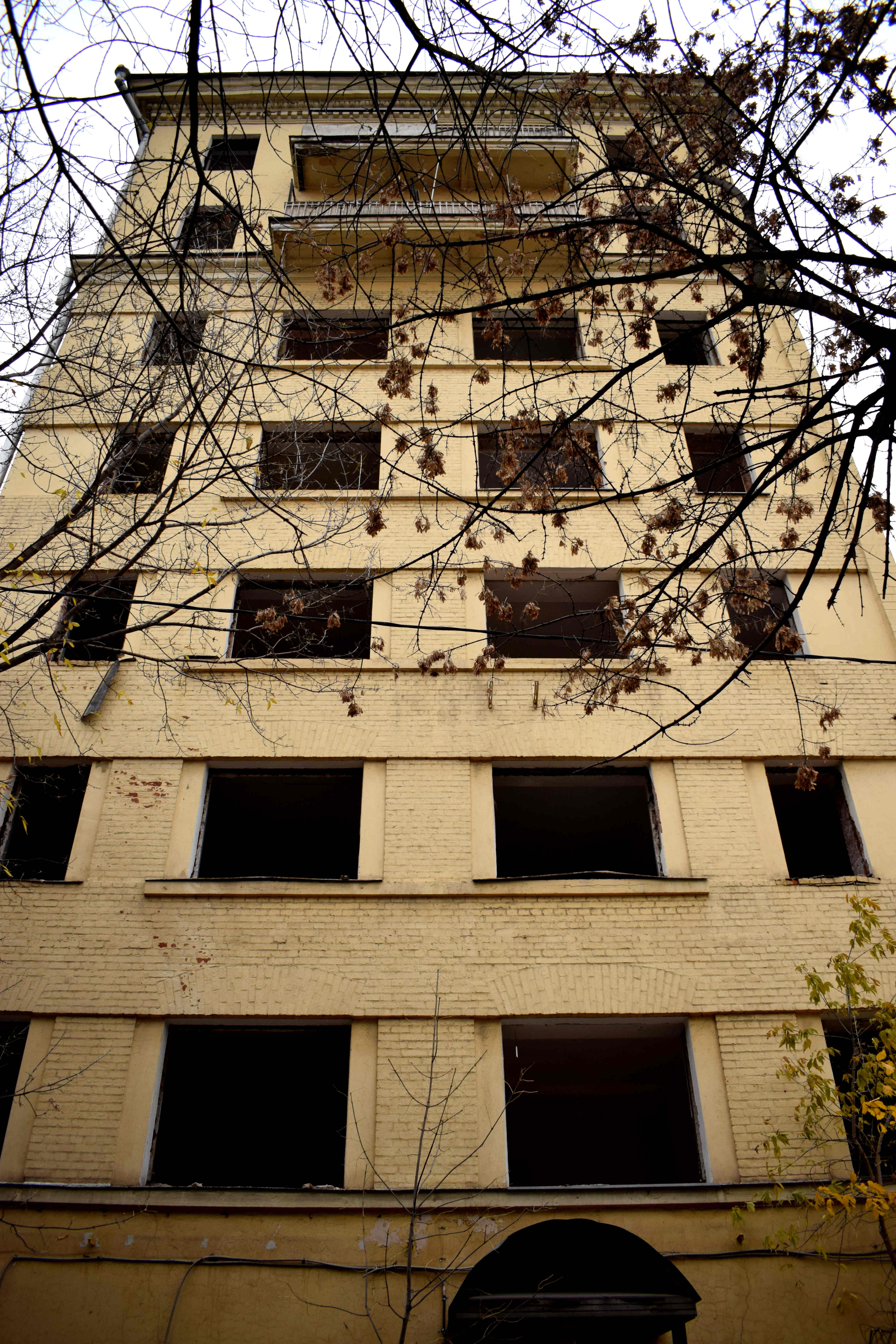 But in Russia, people are embarrassed by it.
But in Russia, people are embarrassed by it.
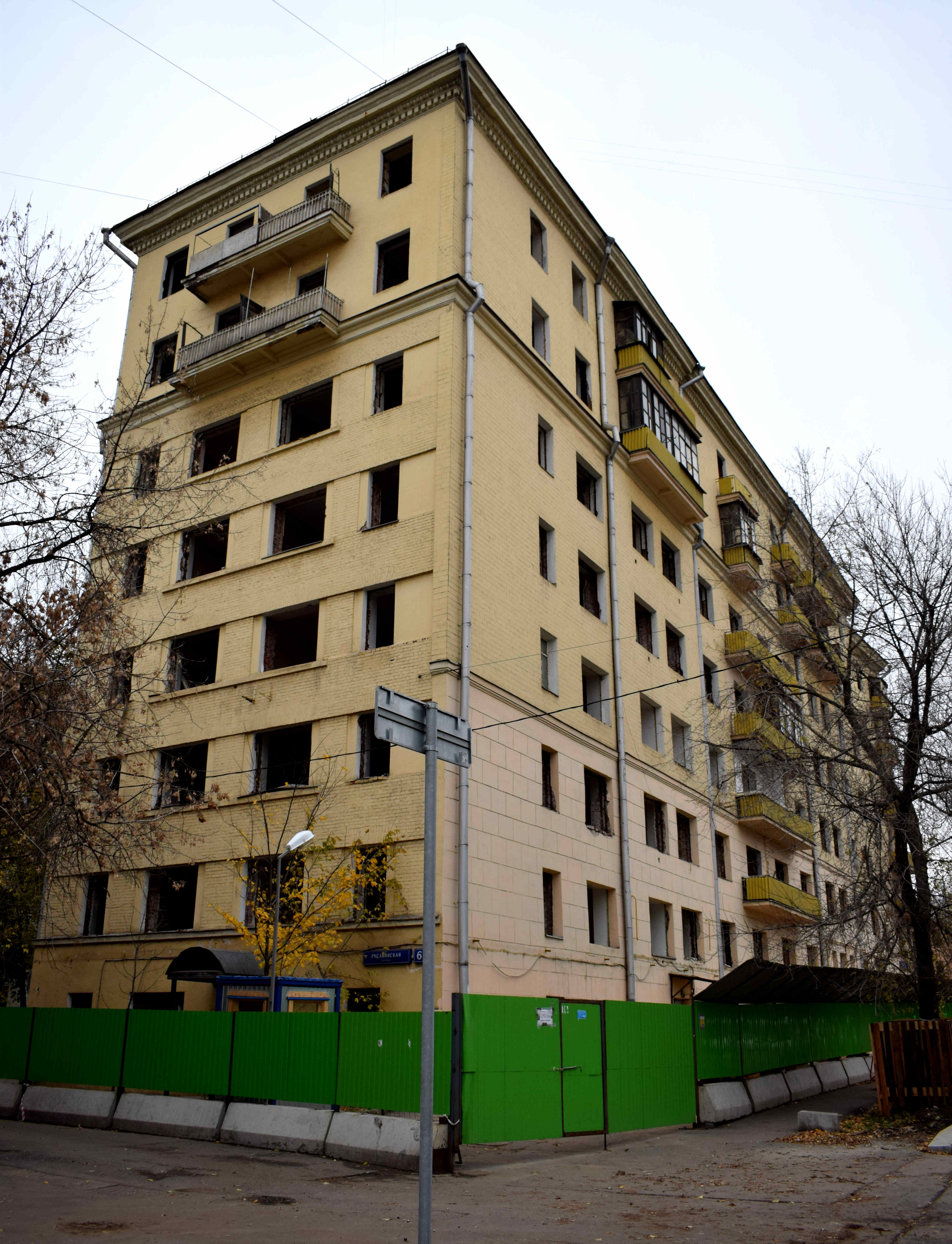 And because of this, the building will see the last of its days.
And because of this, the building will see the last of its days.
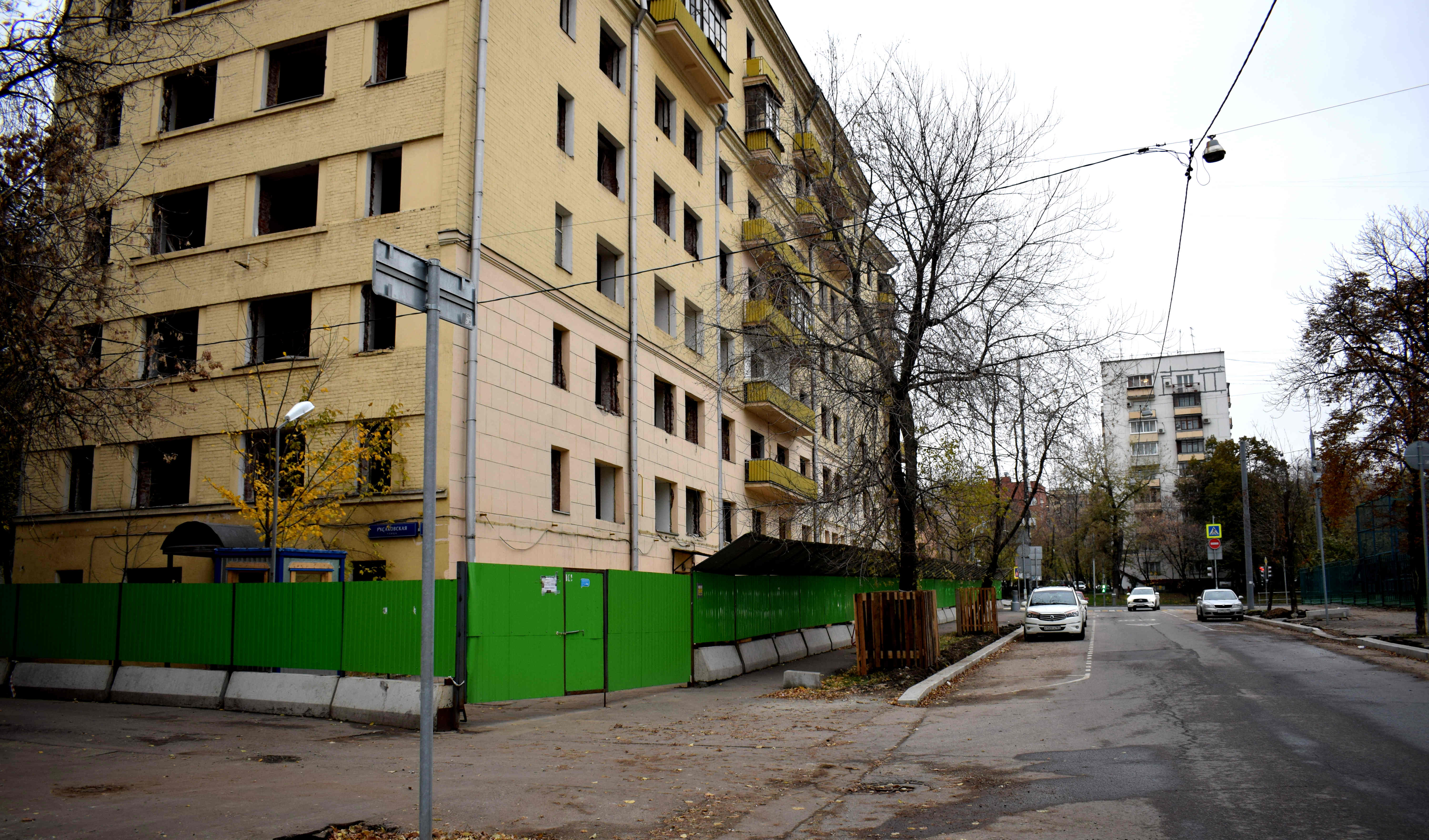 Rusakovskaya will no longer be the same street without this structure. Instead of a quiet, old historic district near the center of Moscow, we will get yet another construction dump.
Rusakovskaya will no longer be the same street without this structure. Instead of a quiet, old historic district near the center of Moscow, we will get yet another construction dump.
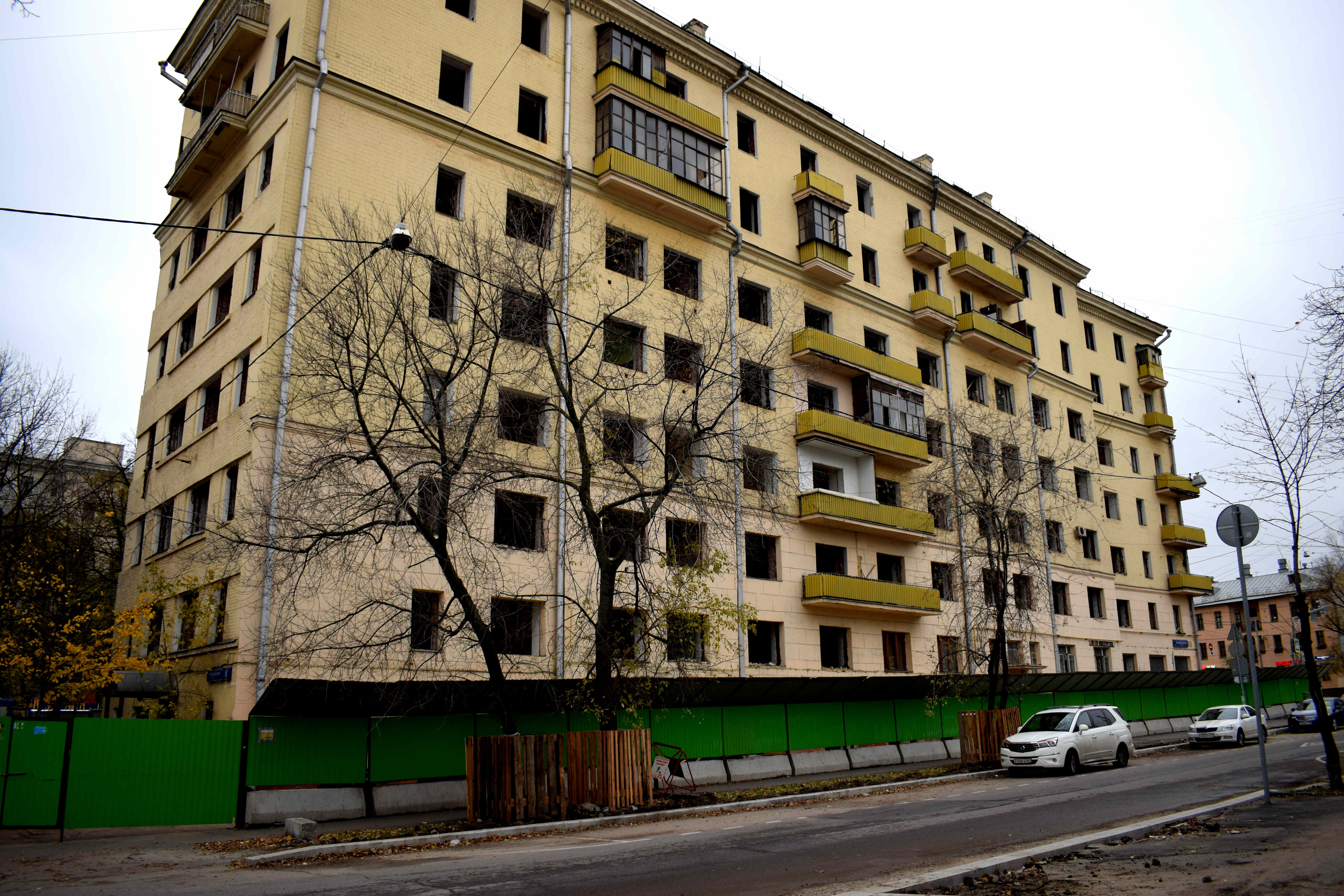 How many families were raised here, whose homes will be forever destroyed.
How many families were raised here, whose homes will be forever destroyed.
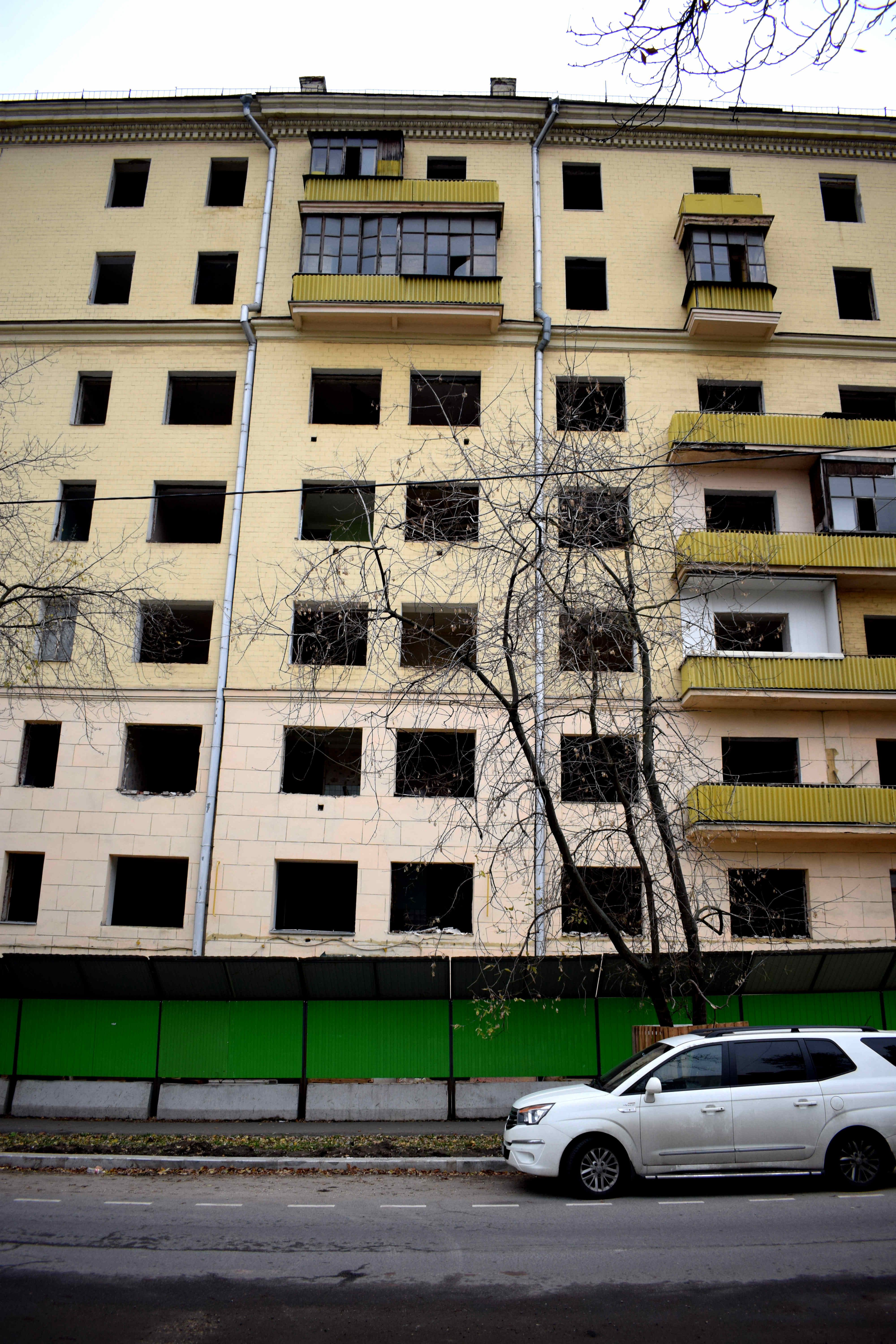 You can still see the wallpaper inside the different apartments, keeping alive their memories.
You can still see the wallpaper inside the different apartments, keeping alive their memories.
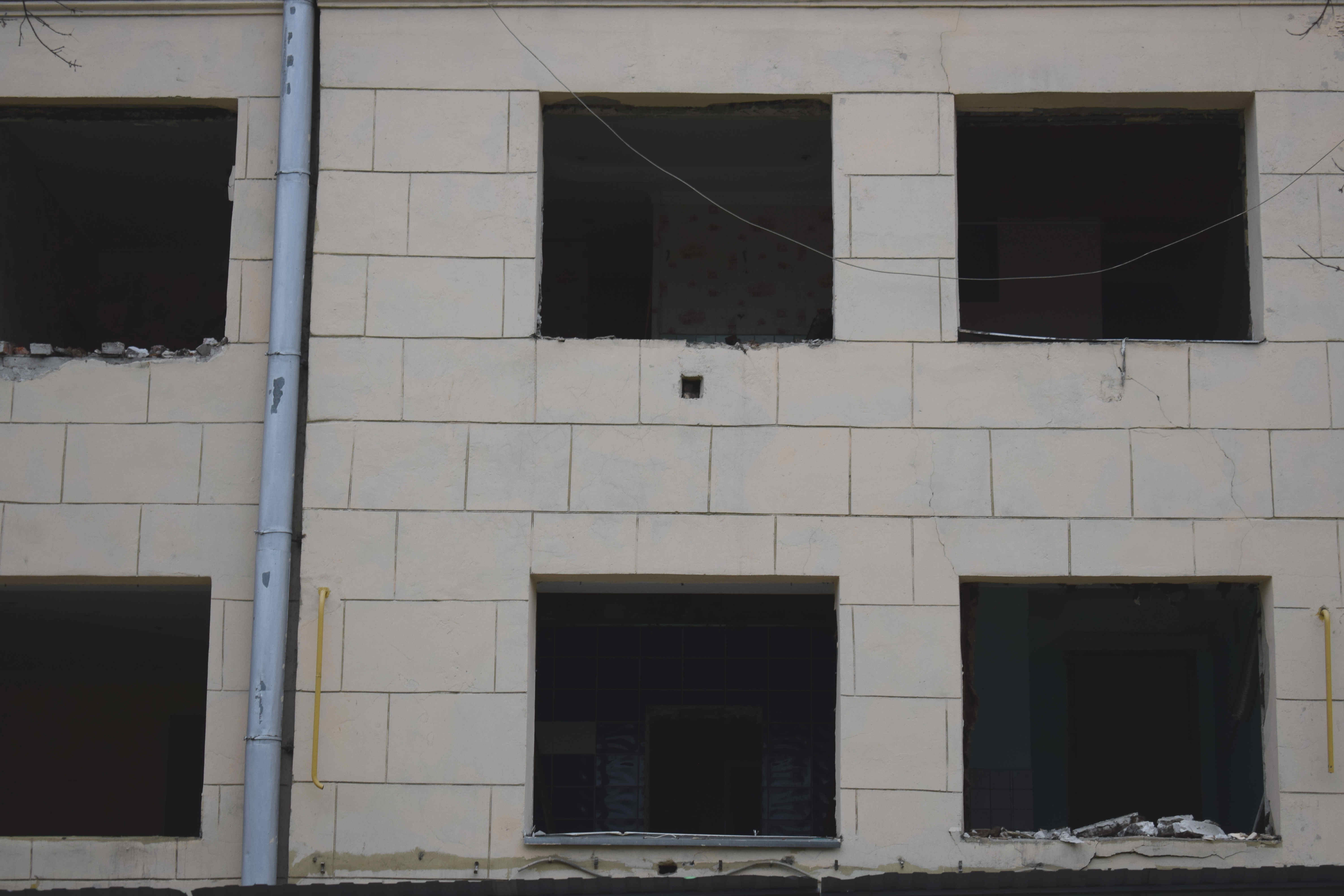 Their balconies that could have been renovated and preserved.
Their balconies that could have been renovated and preserved.
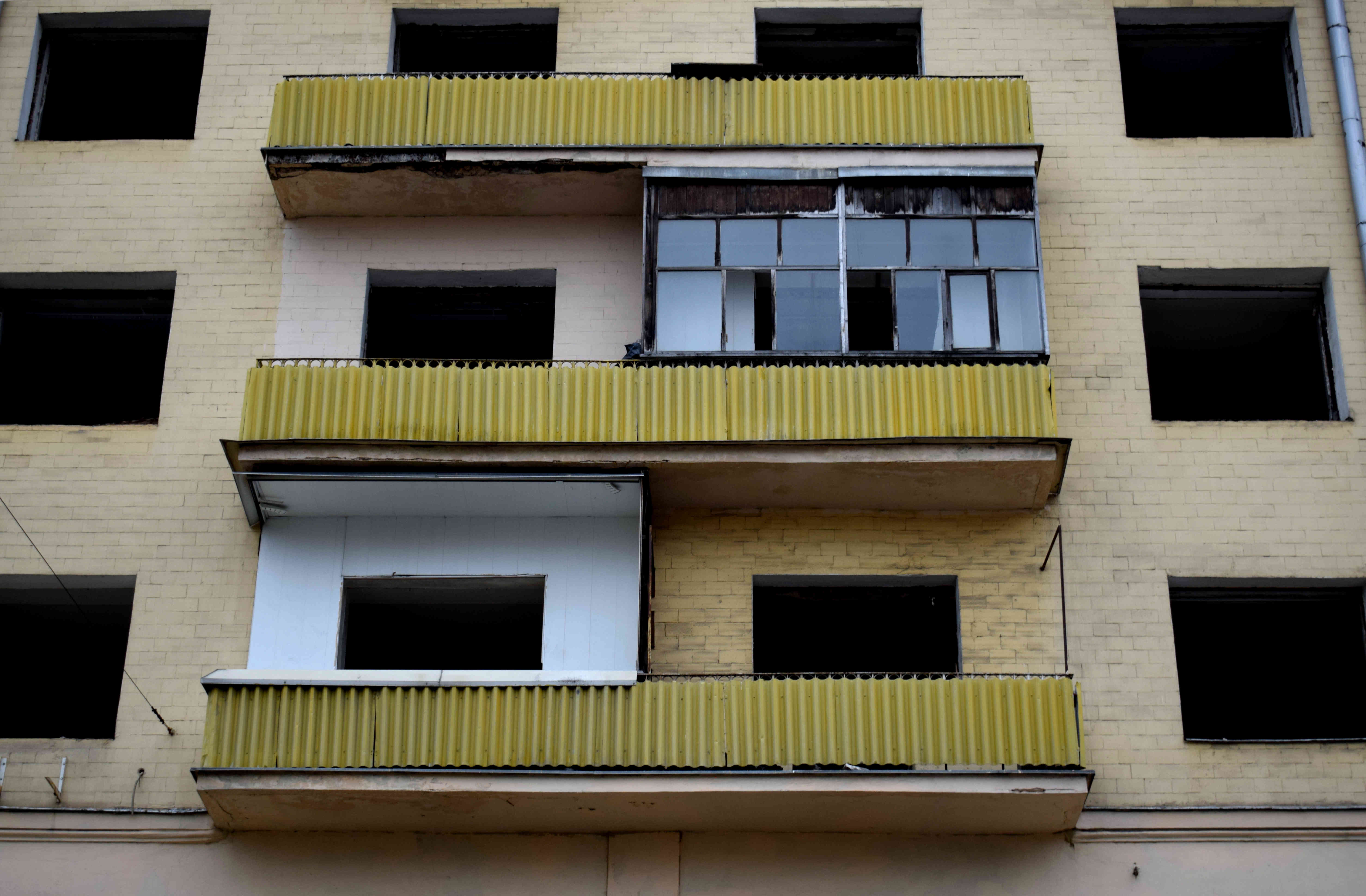 Beautiful apartments with thick brick walls and high ceilings. Apartments that could be some of the most expensive property in Moscow.
Beautiful apartments with thick brick walls and high ceilings. Apartments that could be some of the most expensive property in Moscow.
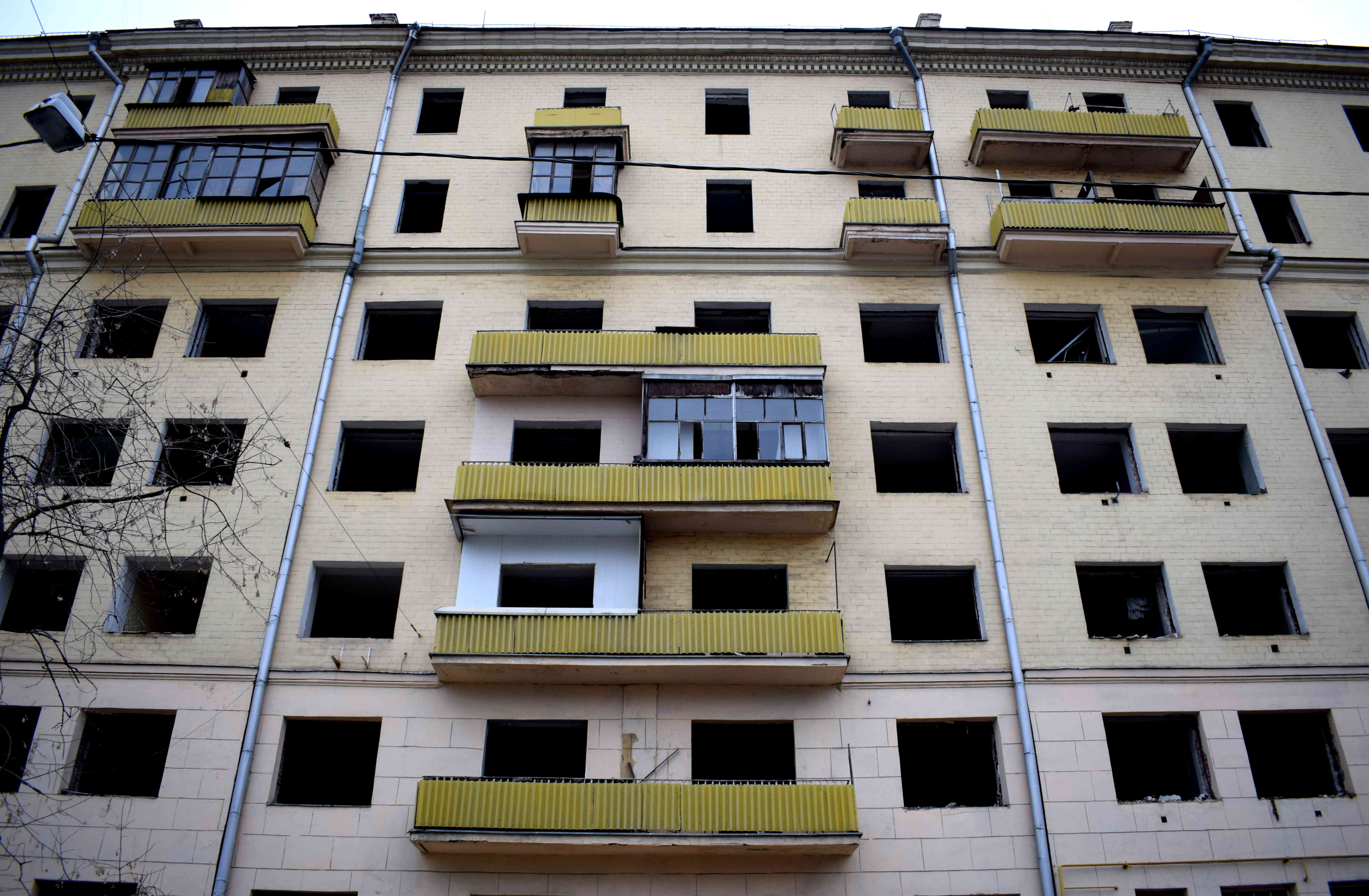 All of this, gone forever, because the people that live nearby, such as in this building here, voted in favor of the renovation program.
All of this, gone forever, because the people that live nearby, such as in this building here, voted in favor of the renovation program.
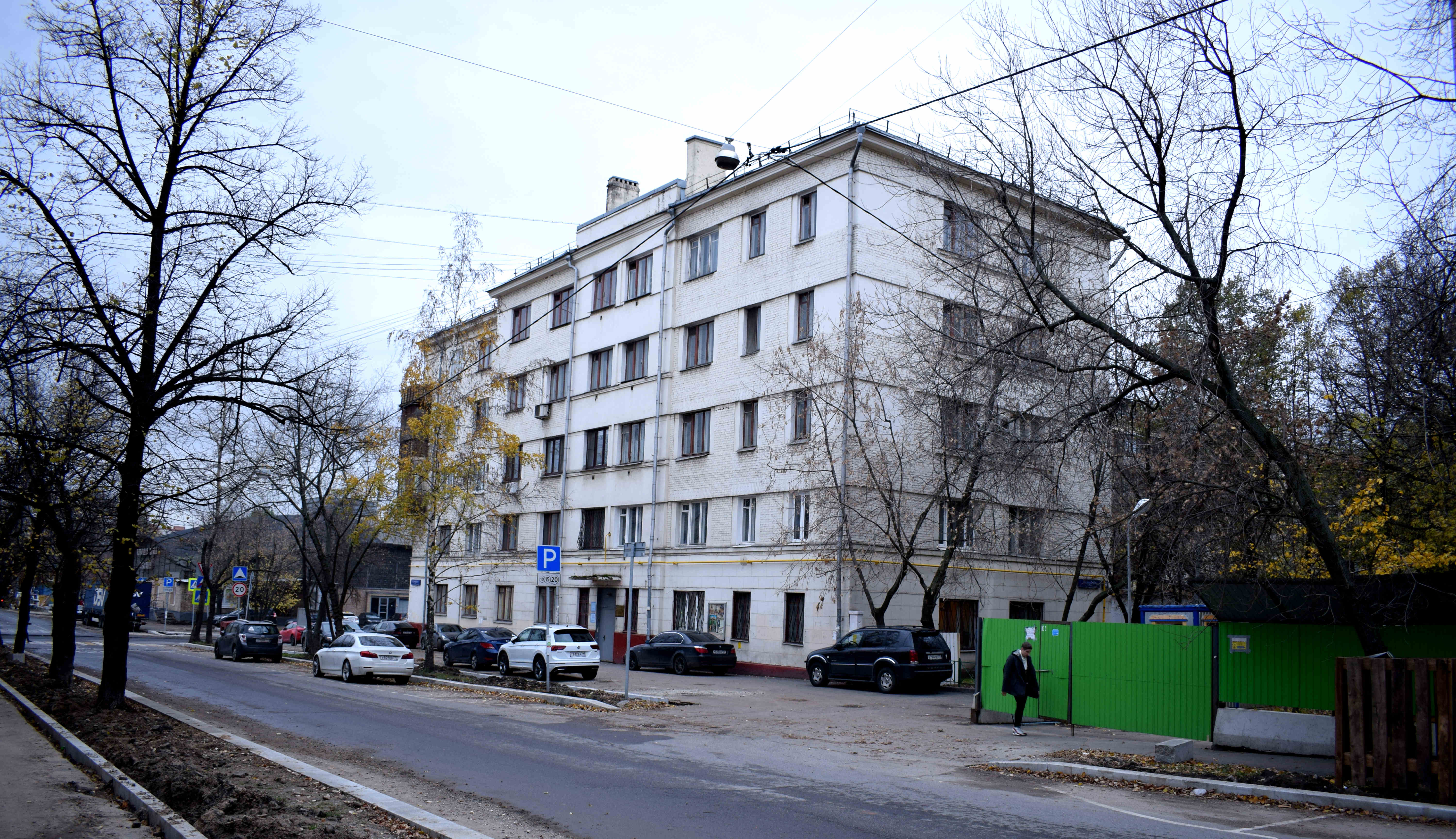 So who’s to blame for the loss of this historic district in Moscow?
So who’s to blame for the loss of this historic district in Moscow?
At first, I was ready to just blame the city government.
After all, they are the ones setting urban policy in Moscow. They decided not to afford these buildings historical status and preserve them.
They are the one’s that came up with the idiotic renovation program that has destroyed the concept of private property in Russia.
As it turns out, you can’t buy an apartment in Moscow anymore after that law was passed.
Because at any moment, the people who live in your building can decide they don’t like it anymore and vote to be included in a renovation program.
And then that apartment you bought, and invested your money in to renovate, where you thought you would live the rest of your life and raise your kids in, all of a sudden is taken away from you because your neighbors had a different opinion.
In other words, your neighbors have more of a right to your property, than you do yourself.
Welcome to Moscow in the 21st century, a city where the most basic institution of private property does not work.
So it’s easy to blame the government.
But of course, that’s only one side of the coin. The other side is much more depressing.
Because at the end of the day, the people who live here voted to destroy this district. They voted in favor of the renovation program, and they knew exactly what would happen to this district afterwards.
They knew the city would destroy it. They consciously voted in favor of such destruction.
It’s a phenomenon I will never be able to understand. Russians travelling to Europe to enjoy historic architecture, but then destroying that same exact kind of architecture in their own country.
As a result of this warped mentality, we can all say goodbye to yet another beautiful, historic neighborhood in Moscow.
R.I.P. Русаковская улица, дом 6. 1925-2019
For those people in Moscow that do care, I suggest you all take some time out of your busy schedules and try to visit these buildings while they are still standing.
Because soon the only place you will be able to see them is in the pages of some history books.
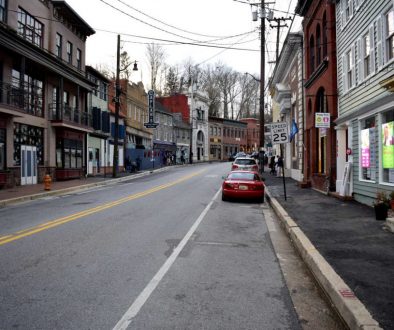
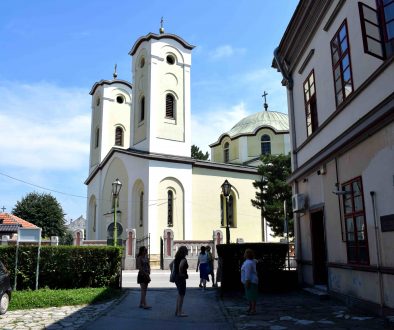
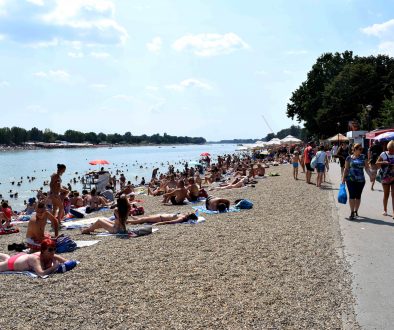
October 22, 2019 @ 12:30 am
It’s actually true renovation would turn these houses into the most expensive flats possible. Sadly this wouldn’t serve people either. We have a similiar problem in Berlin going on where private companies renovate old buildings and afterwards they just stay empty because no one can afford it. Our rents here increased by almost 80% in less than 7 years. A big topic right now In Germany.
Anyway i really enjoyed this article and I’m very thankful coming from reddit.
Greetings from Berlin..
October 22, 2019 @ 4:18 pm
Thanks for your comment! Glad you liked the article. I agree that high rents are a big problem in Germany. I have some friends over in Berlin, and they say it is really hard to find an apartment to rent for a reasonable price 🙁